2023 in Review
No replays 😊
In order finished
In order finished
193 Games
In the old days, the cry in the joints, when they were ready to close, was “you don’t have to go home, but you can’t stay here.” -- Boston Herald (March 5, 1944) p. 19, col. 3
The meal is finished, the bill awaiting payment. The din of called orders and いらっしゃいませ indirect signs to leave. Maybe there's a concrete reason for lingering. The train won't arrive for a while. You're waiting for someone to finish shopping. The landlord is fixing the AC. Your parents have been fighting. You get an hour for lunch. Returning home means a slow spiral of distraction until rest and the cycle begins anew tomorrow.
A State Police office and a State Policewoman were on the premises when the Glass Hut was raided in 1960. They reported George Tecci, as was his custom, notified the patrons just before 1 a.m., “You don’t have to go home, but you can’t stay here.” -- Record American (August 11, 1964) p. 8, cols. 2-3
Does the why matter? Isn't it enough to not want to go home? Isn't it enough to just want to be for a moment? The toll has already been paid, a bowl of negi ramen. Does that not grant me the opportunity to exist in space and time without spending more? The park is too far, my head too aching, the air too chill. I am here. Let me be here. Do I need a reason to exist, to be listless?
食い終わったらさっさと帰れ
There's no point to pecking at the oil in my ramen. No more than there is to counting the grains of rice in a bowl. No more than there is to playing any game. No more than there is to doing anything. Work and leisure both a conscious and unconscious consumption of finite time in exchange for a something which is nothing in truth. Everything is passing time until we die. It might be Zen or Stoicism or Ascetic. In any case, I choose how I while away my dwindling moments.
That, is itself, a freedom.
The meal is finished, the bill awaiting payment. The din of called orders and いらっしゃいませ indirect signs to leave. Maybe there's a concrete reason for lingering. The train won't arrive for a while. You're waiting for someone to finish shopping. The landlord is fixing the AC. Your parents have been fighting. You get an hour for lunch. Returning home means a slow spiral of distraction until rest and the cycle begins anew tomorrow.
A State Police office and a State Policewoman were on the premises when the Glass Hut was raided in 1960. They reported George Tecci, as was his custom, notified the patrons just before 1 a.m., “You don’t have to go home, but you can’t stay here.” -- Record American (August 11, 1964) p. 8, cols. 2-3
Does the why matter? Isn't it enough to not want to go home? Isn't it enough to just want to be for a moment? The toll has already been paid, a bowl of negi ramen. Does that not grant me the opportunity to exist in space and time without spending more? The park is too far, my head too aching, the air too chill. I am here. Let me be here. Do I need a reason to exist, to be listless?
食い終わったらさっさと帰れ
There's no point to pecking at the oil in my ramen. No more than there is to counting the grains of rice in a bowl. No more than there is to playing any game. No more than there is to doing anything. Work and leisure both a conscious and unconscious consumption of finite time in exchange for a something which is nothing in truth. Everything is passing time until we die. It might be Zen or Stoicism or Ascetic. In any case, I choose how I while away my dwindling moments.
That, is itself, a freedom.
The Far Cry Elden Ring-ification of Breath of the Wild with a smattering of end-of-chapter Fortnite and New Funky Mode.
While BotW was content to let players roam free in a sprawling world, Tears of the Kingdom reins in this freedom considerably and hides the guardrails from the player with horse blinders. Link is still welcome to run around Hyrule at will, but the primary storyline holds the keys which allow actual exploratory liberation. My first dozen hours completely ignored Lookout Landing, leaving me without critical tools like the paraglider and towers. That was the most challenging TotK ever got, and the most it (unintentionally) forced me to think outside the box. I dragged gliders to the tops of hills labouriously, I used a horse and cart, I made elaborate vehicles simply to get around. I scrounged for rockets, fans, batteries, and air balloons to ascend to sky islands, making it to a few of the lower ones with great accomplishment. I committed to putting off the towers as long as I could, not realising they were an outright necessity. Seeing how this additional layer of the map functioned demystified it severely, rendering a challenge into a stepping stone for parcels of content.
The depths, like the skies above, are filled with potential. Many of its spaces are similarly wide open to encourage blind exploration with vehicles. Only there is nearly no purpose to any of it. Lightroots are a checkbox which dismantle the most compelling part of the depths -- their darkness. The depths are a place you visit to grab zonaite or amiibo armour and leave. As the Fire Temple is within the depths, and it being the first I tackled, I falsely believed there would be more dungeons strewn about below, simply a part of the world rather than instanced away from it. Sadly, it is the exception.
The other temples are obfuscated and inaccessible without their related storylines, which is itself fine (the temples are impossible to progress through without their associated power anyways) but this leaves the world feeling more boxed in, a selection of rooms in an overly-long hallway. A spare few rooms complement each other, most of them do not. The walls of the rooms must be thick. Whether it is shrines, side quests, or temples, the developers yet again seemingly have no way of knowing what abilities the player might have, what puzzles they have encountered, what skills they remember. All that they know is that in the Fire Temple, you have a Goron. In the Water Temple, you have Zora armour. The positive is, of course, that these things can thus be tackled in any order without a fear of missing out on anything. The downside is that there is never anything more to a shrine, a temple, or anything than what the player encounters the first go around. There is no impetus to return to a location when you have a better tool, or a wider knowledge of how the game's mechanics work. You show up, experience the room, and leave. With 300 map pins at your disposal, and similar issues arising in BotW, there's a sense that the developers chickened out near the end, too afraid to let the player (gasp) backtrack or (gasp) miss out.
Ironically enough, the lack of FOMO is what I miss most. When I was towerlessly exploring with a hodgepodge of trash scavenged from around the world, I felt free. I felt clever! When I discovered the intended mode of play, however, I felt I was putting a square peg in a square hole. There's a crystal that needs to be moved to a far away island? Before, I might have made a horror of Octoballoons and Korok Fronds with Fans and Springs to get it where it needed to go. When the Fruit of Knowledge was consumed, I saw the parts for the prebuilt Fanplane were right next to the Crystal. There's a breakable wall in a dungeon? Bomb Flowers or a hammer are right there. It is incredibly safe. It is a pair of horse blinders that you can decorate as you please. Go ahead and make your mech, you are still on the straight and narrow path.
TotK tries to bring back the linearity of Zeldas past within the BotW framework, but it ignores that the linearity was speckled with a weave of areas which expanded alongside your arsenal, rather than shrinking. Everything here is incongruous, a smörgåsbord of cool set pieces that simply don't go together. There is too much content (Elden Ring) that is too self-contained (end of chapter Fortnite) and too afraid that you will not experience it (New Funky Mode).
Did I have fun? Yes. But I had to make it myself.
While BotW was content to let players roam free in a sprawling world, Tears of the Kingdom reins in this freedom considerably and hides the guardrails from the player with horse blinders. Link is still welcome to run around Hyrule at will, but the primary storyline holds the keys which allow actual exploratory liberation. My first dozen hours completely ignored Lookout Landing, leaving me without critical tools like the paraglider and towers. That was the most challenging TotK ever got, and the most it (unintentionally) forced me to think outside the box. I dragged gliders to the tops of hills labouriously, I used a horse and cart, I made elaborate vehicles simply to get around. I scrounged for rockets, fans, batteries, and air balloons to ascend to sky islands, making it to a few of the lower ones with great accomplishment. I committed to putting off the towers as long as I could, not realising they were an outright necessity. Seeing how this additional layer of the map functioned demystified it severely, rendering a challenge into a stepping stone for parcels of content.
The depths, like the skies above, are filled with potential. Many of its spaces are similarly wide open to encourage blind exploration with vehicles. Only there is nearly no purpose to any of it. Lightroots are a checkbox which dismantle the most compelling part of the depths -- their darkness. The depths are a place you visit to grab zonaite or amiibo armour and leave. As the Fire Temple is within the depths, and it being the first I tackled, I falsely believed there would be more dungeons strewn about below, simply a part of the world rather than instanced away from it. Sadly, it is the exception.
The other temples are obfuscated and inaccessible without their related storylines, which is itself fine (the temples are impossible to progress through without their associated power anyways) but this leaves the world feeling more boxed in, a selection of rooms in an overly-long hallway. A spare few rooms complement each other, most of them do not. The walls of the rooms must be thick. Whether it is shrines, side quests, or temples, the developers yet again seemingly have no way of knowing what abilities the player might have, what puzzles they have encountered, what skills they remember. All that they know is that in the Fire Temple, you have a Goron. In the Water Temple, you have Zora armour. The positive is, of course, that these things can thus be tackled in any order without a fear of missing out on anything. The downside is that there is never anything more to a shrine, a temple, or anything than what the player encounters the first go around. There is no impetus to return to a location when you have a better tool, or a wider knowledge of how the game's mechanics work. You show up, experience the room, and leave. With 300 map pins at your disposal, and similar issues arising in BotW, there's a sense that the developers chickened out near the end, too afraid to let the player (gasp) backtrack or (gasp) miss out.
Ironically enough, the lack of FOMO is what I miss most. When I was towerlessly exploring with a hodgepodge of trash scavenged from around the world, I felt free. I felt clever! When I discovered the intended mode of play, however, I felt I was putting a square peg in a square hole. There's a crystal that needs to be moved to a far away island? Before, I might have made a horror of Octoballoons and Korok Fronds with Fans and Springs to get it where it needed to go. When the Fruit of Knowledge was consumed, I saw the parts for the prebuilt Fanplane were right next to the Crystal. There's a breakable wall in a dungeon? Bomb Flowers or a hammer are right there. It is incredibly safe. It is a pair of horse blinders that you can decorate as you please. Go ahead and make your mech, you are still on the straight and narrow path.
TotK tries to bring back the linearity of Zeldas past within the BotW framework, but it ignores that the linearity was speckled with a weave of areas which expanded alongside your arsenal, rather than shrinking. Everything here is incongruous, a smörgåsbord of cool set pieces that simply don't go together. There is too much content (Elden Ring) that is too self-contained (end of chapter Fortnite) and too afraid that you will not experience it (New Funky Mode).
Did I have fun? Yes. But I had to make it myself.
I like this game : )
When the faithful remaster is faithful.
Difficult to put into words how this makes me feel, but it seems a fitting capstone for a year marked by LLMs, themselves harvesters of every shred of available data gathered by algorithms we've been forced to abide by following the hyper-digitisation of life in the wake of COVID.
Unequivocally the best video game ever made, though that has to be cheating, right? After all, you wouldn’t say your Raspberry Pi loaded with ROMs is itself a video game. An official compilation already stretches the definition of a video game, much to the chagrin of any dweeb trying to weasel their way out of providing an actual list of their favourite games. Yet this unofficial potpourri does what a mere compilation cannot, what your ROM library fails at. Multibowl! puts these games on equal footing with one another, contextualises them, renders their objectives concrete, and synthesises them into a new, greater whole. It is the wet dream of the games historian, the archivist, the obscura-seeker, the high-score-chaser, the competitive gamer, the informed, the ignorant, and the creative.
Bennett Foddy and AP Thomson have unenviably plumbed the depths of numerous ROM sets to scrounge up treasures both noteworthy and forgotten, presenting them all as equals as games and micro-competitive arenas. Obvious mainstays of games history, Mario Bros., Gauntlet, Metal Slug, and NBA Jam operate as immediately recognisable artefacts with goals and control schema that are already familiar to many. However, they are just as likely to come up as titles which are not generally considered competitive and oppositional: Lemmings; Maze; Bonanza Bros. Though lacking internal mechanisms for confrontational gameplay, clever use of save states and memory analysis allow Multibowl! to check for some change in some variable to grant one player a point.
One of the greatest joys in Multibowl! is its deep cuts, its pulling up of games you have never heard of, the sort of title your eye skips over in your search for that SegaSonic Bros. ROM, titles bordering on the uncanny in their near-familiarity, games that make you quickly jot down their title out of befuddlement or glee. Games you would never reasonably play. In a vacuum of playing them on their own, those works might not hold your attention long enough to grasp their purpose or gameplay. Within the rapid pace of Multibowl!, within a framework of having no choice, they demand attention, dissection, and comprehension. The coercion for the players to stick with these titles for a mere thirty seconds acts as a microexposure to the realities of most of games history, namely the lack of anything else to do. When these games necessarily compete for your attention in backlogs and ROM sets with hundreds, if not thousands, of games, there is no reason for most players to approach an understanding of them. Why expose myself to the dregs of history when Pac-Man is right there?
A games historian, archivist, or obscura-seeker has some secondary goal for their play here, that of context and exposure. Someone like myself is not necessarily playing these for their worth as fun experiences, but to come away with a fuller understanding of games as a whole, games as a cultural expression, games as a reflection of a zeitgeist, games as escapism, games as political tools, games as violence, games as transgression, games as collaborative, games as competitive, games as more than just games. Games as a means, not an end.
Multibowl!’s real purpose is not as a game, at least not to me, but as some smörgåsbord of curatorial excellence, diversity, and inversion. It demonstrates how games have always been inventive and worthy of attention in some capacity, while still remaining semi-boundless in and of itself, conveying the unceasing work of history. Histories are forever rewritten for new contexts. The once irrelevant becomes critically important with changing tides. The once foundational becomes a historiographical assumption. With vast shifts in the goals of games histories, there will always be more to uncover, more to connect.
Here's to 1,000 more.
Bennett Foddy and AP Thomson have unenviably plumbed the depths of numerous ROM sets to scrounge up treasures both noteworthy and forgotten, presenting them all as equals as games and micro-competitive arenas. Obvious mainstays of games history, Mario Bros., Gauntlet, Metal Slug, and NBA Jam operate as immediately recognisable artefacts with goals and control schema that are already familiar to many. However, they are just as likely to come up as titles which are not generally considered competitive and oppositional: Lemmings; Maze; Bonanza Bros. Though lacking internal mechanisms for confrontational gameplay, clever use of save states and memory analysis allow Multibowl! to check for some change in some variable to grant one player a point.
One of the greatest joys in Multibowl! is its deep cuts, its pulling up of games you have never heard of, the sort of title your eye skips over in your search for that SegaSonic Bros. ROM, titles bordering on the uncanny in their near-familiarity, games that make you quickly jot down their title out of befuddlement or glee. Games you would never reasonably play. In a vacuum of playing them on their own, those works might not hold your attention long enough to grasp their purpose or gameplay. Within the rapid pace of Multibowl!, within a framework of having no choice, they demand attention, dissection, and comprehension. The coercion for the players to stick with these titles for a mere thirty seconds acts as a microexposure to the realities of most of games history, namely the lack of anything else to do. When these games necessarily compete for your attention in backlogs and ROM sets with hundreds, if not thousands, of games, there is no reason for most players to approach an understanding of them. Why expose myself to the dregs of history when Pac-Man is right there?
A games historian, archivist, or obscura-seeker has some secondary goal for their play here, that of context and exposure. Someone like myself is not necessarily playing these for their worth as fun experiences, but to come away with a fuller understanding of games as a whole, games as a cultural expression, games as a reflection of a zeitgeist, games as escapism, games as political tools, games as violence, games as transgression, games as collaborative, games as competitive, games as more than just games. Games as a means, not an end.
Multibowl!’s real purpose is not as a game, at least not to me, but as some smörgåsbord of curatorial excellence, diversity, and inversion. It demonstrates how games have always been inventive and worthy of attention in some capacity, while still remaining semi-boundless in and of itself, conveying the unceasing work of history. Histories are forever rewritten for new contexts. The once irrelevant becomes critically important with changing tides. The once foundational becomes a historiographical assumption. With vast shifts in the goals of games histories, there will always be more to uncover, more to connect.
Here's to 1,000 more.
The best rhythm games don't just feel good to play, they feel cool to play. SDVX is as insane to watch as it is to experience, even lower difficulty charts making one feel like a cool ass wedding DJ.
Wonder Flower gimmicks are cute until they turn repetitious, which they do by the end of World 2. The badges largely make up for a lack of platforming aptitude which, as a seasoned gamester, means I have to play the game wrong to accommodate their use. But I'm not gonna unlearn my Mario skills so I don't remember to use them outside of when they are clearly necessary for side objectives like an over-polished immsim. You mean I should use the Dolphin badge on the levels right after I got it? Wowee Zowee!
Broadly speaking this feels like an attempt to teach the kids that grew up with the Switch what Mario is about. The hypersleek UI elements, mountains of spoken text as a replacement for other markers of design intent, the badges, the Wowee Zowee, the oodles of characters, the gacha elements of the standees, the multiple currencies (and decimalisation of Flower coins to further litter the field with shinies), the little emojis, the lack of points. These additions and subtractions are by no means bad but I won't lie, it feels a little like I'm playing a AAA game from the 2020s. Because I am. It's hard to read Wonder as a creative reinvention and reinvigoration of Mario because I know it took thousands of people to make this. That every decision was subject to board meetings and focus groups. It's the same problem as your New Super games -- the formula must be adhered to. And even if the formula changes, it's still a formula. Nothing wrong with that, but it's not what I look for at this point in my life.
I'll keep playing it, I'll probably finish it. It's like a Coca-Cola Creation, y'know? You see it on the shelf, you think 'what the hell do '+XP' or 'Starlight' taste like, the first sip is novel and enchanting, before long you're still drinking Coke. If I want true innovation, I'll reach for the local-made can of kombucha flavoured with some berry I've never heard of before. Like Haskap. Uhhh, for the purposes of this analogy I guess the random shit I pick up on Steam and itch.io are the kombucha.
And I gotta say, I'm sorry but I can't hear the Mario Gang say Wowee Zowee without having flashbacks to Game Grumps Kirby Super Star Part 2 where Jon and Arin argued for like a minute straight over whether or not Arin had said Wowee Zowee before. Back then life was so simple. I was so young. Games held so much potential. Eleven years, gone in the blink of an eye. In another life, I'm the Mario Wonder kid, growing up on a Switch. Who could have known things would turn out the way they did, that I'd be the person I am today...
Feels like a rebrand to cover up some controversial past half the time.
WOAH JUST LIKE GAME GRUMPS 😱
Broadly speaking this feels like an attempt to teach the kids that grew up with the Switch what Mario is about. The hypersleek UI elements, mountains of spoken text as a replacement for other markers of design intent, the badges, the Wowee Zowee, the oodles of characters, the gacha elements of the standees, the multiple currencies (and decimalisation of Flower coins to further litter the field with shinies), the little emojis, the lack of points. These additions and subtractions are by no means bad but I won't lie, it feels a little like I'm playing a AAA game from the 2020s. Because I am. It's hard to read Wonder as a creative reinvention and reinvigoration of Mario because I know it took thousands of people to make this. That every decision was subject to board meetings and focus groups. It's the same problem as your New Super games -- the formula must be adhered to. And even if the formula changes, it's still a formula. Nothing wrong with that, but it's not what I look for at this point in my life.
I'll keep playing it, I'll probably finish it. It's like a Coca-Cola Creation, y'know? You see it on the shelf, you think 'what the hell do '+XP' or 'Starlight' taste like, the first sip is novel and enchanting, before long you're still drinking Coke. If I want true innovation, I'll reach for the local-made can of kombucha flavoured with some berry I've never heard of before. Like Haskap. Uhhh, for the purposes of this analogy I guess the random shit I pick up on Steam and itch.io are the kombucha.
And I gotta say, I'm sorry but I can't hear the Mario Gang say Wowee Zowee without having flashbacks to Game Grumps Kirby Super Star Part 2 where Jon and Arin argued for like a minute straight over whether or not Arin had said Wowee Zowee before. Back then life was so simple. I was so young. Games held so much potential. Eleven years, gone in the blink of an eye. In another life, I'm the Mario Wonder kid, growing up on a Switch. Who could have known things would turn out the way they did, that I'd be the person I am today...
Feels like a rebrand to cover up some controversial past half the time.
WOAH JUST LIKE GAME GRUMPS 😱
Tedious, durational bliss. A reclamation of time through singular labour. The hyperconnected, hyperonline, hyperalways world of today does not allow us to take a step back and enjoy an act for its own sake, and the simplicity of counting grains of rice digitally, as in Marina Abramovic's Counting the Rice exercise forces the mind to slow down. So caught up in the act of counting, of organising, of breaking down an insurmountable task into something able to be completed that no thought intruded, no anxiety fomented. Me, and the rice. Even trying to bring stimulus into the space through music, or the spoken word brings into focus the distracting nature of the world. It did not serve to entertain or assist my task, it served to keep me from its total completion.
As Abromavic argues, "the only time we don't think, it is scientifically proven, is when we sneeze and when we orgasm," but through a slow, intentional act we can approach something close to the thoughtless state. For hours my mind was rice, and all was as it should be.
As Abromavic argues, "the only time we don't think, it is scientifically proven, is when we sneeze and when we orgasm," but through a slow, intentional act we can approach something close to the thoughtless state. For hours my mind was rice, and all was as it should be.
Subtler and all the better for it.
Though the grafting of Sonic 3 & Knuckles and Sonic Mania' mechanics onto Sonic the Hedgehog only emphasised how much of an outlier the first Sonic is, here they serve to supplement an already great game. The introduction of the Spin Dash, and levels better built around Sonic's improved speed and handling (and Tails' game-busting flight), means the Drop Dash and Super Peel Out are not at odds with the core experience. The Flame Barrier and Lightning Shield become options rather than borderline cheating. With Knuckles already playable in the original with Lock-On Technology, his inclusion doesn't feel like afterthought (though it's a shame there's no Amy).
Widescreen and being able to actually see the Special Stages was already more than enough, everything else is a cherry on top.
Though the grafting of Sonic 3 & Knuckles and Sonic Mania' mechanics onto Sonic the Hedgehog only emphasised how much of an outlier the first Sonic is, here they serve to supplement an already great game. The introduction of the Spin Dash, and levels better built around Sonic's improved speed and handling (and Tails' game-busting flight), means the Drop Dash and Super Peel Out are not at odds with the core experience. The Flame Barrier and Lightning Shield become options rather than borderline cheating. With Knuckles already playable in the original with Lock-On Technology, his inclusion doesn't feel like afterthought (though it's a shame there's no Amy).
Widescreen and being able to actually see the Special Stages was already more than enough, everything else is a cherry on top.
Cute, short, and snap-snap-snappy with a utilisation of the crank that sets it apart from other crank-heavy titles like Crankin's Time Travel Adventure and A Balanced Brew. Whereas those games go for a one-to-oneness between physical movement and gameplay, Direct Drive brings momentum into the picture, leading to a looser style of play. This works stupendously in theory, but the low resistance of the crank, and relatively slow cranking involved, means what should feel like pedalling a bike or grinding coffee beans instead seems unresponsive at times. With generous room for error, however, that never becomes a problem prohibiting progress. Even the managers' requests and harsher timing penalties never make this frustrating or, frankly, challenging. I got three stars on every song on my first try, and only the singular diversion of calibrating the turntable gave me any difficulty.
But you know what? That's fine. I don't use my Playdate to feel frustrated, I use it as a short(er) diversion, a little amuse-bouche of what games can achieve. Purely as a game, Direct Drive could use improving. As a concept, it's great, and it put a smile on my face which is what I want from this little yellow doodad.
But you know what? That's fine. I don't use my Playdate to feel frustrated, I use it as a short(er) diversion, a little amuse-bouche of what games can achieve. Purely as a game, Direct Drive could use improving. As a concept, it's great, and it put a smile on my face which is what I want from this little yellow doodad.
Astonished at how much I enjoyed this considering the disdain it has harboured from many whose opinions I hold in very high regard. Its eschewing of Sans-Serif Corpo committee-design in favour of a maximal exploration of bombastic and obtuse peculiarities from the aesthetic to the mechanical warms my heart. The sincerity on display strikes a chord of 'cringe' within me less because of its actual writing content, and more because it is a contemporary parallel to the endearing, honest, whimsical edgelordiness of video games past. Neon White is the Shadow the Hedgehog, The Bouncer, Vexx, Prince of Persia: Warrior Within, Bomberman Act Zero, Dante's Inferno, Jak II, BMX XXX of the 2020s in tone, spit and polished to a shine. It forgoes the failings of mid-2000s muddy and ruddiness, where landscapes and gameplay blended into green-brown smears, and proudly proclaims that games can be capital-C cool and fun as hell. Every skip is the descendant of Ulillillia's Spyro oddities. The soundtrack is the vague memories of Ape Escape and ChainDive, the vibe the immaculate remembrance of youth. It is Lovely Planet with accuracy replaced with speed, speed, speed.
Neon White is unabashedly itself, for good and for ill.
Neon White is unabashedly itself, for good and for ill.
Spongy but fun, my boyfriend says I should cosplay Pinocchio and that's stuck in my mind more than any moment of the game itself.
Cinematic puzzlery before we were ready. Suzuki Bakuhatsu astounds with its production values, abound with turn of the millennium photography, set dressing, apparel, and unbridled contentment. For as harrowing as the premise is, that the mundane has been overtaken by sophisticated explosives, the often devil-may-care attitude of Rin Ozawa's character suggests a subconscious understanding that this danger could never really happen. This is a world before the War on Terror, before we were made to feel unsafe by government and terrorists alike. Why not watch a bomb defusal expert hurriedly carry out her craft on stage, how could the worst possibly come to pass?
These vague plot points and extensive production are indicative of Sol and Enix's attempt to break the conventions of the stagnant puzzle genre. Tetris and Panel de Pon with new coats of paint were not enough. Kula World and iQ weren't thinking big enough. If the medium was to mature into a legitimate mode of storytelling (or at least entertainment) it needed bombast across all genres. The puzzle game could (and is shown to be) so much more than the puzzles themselves. It can be as tense as a thriller, as lighthearted as a situation comedy. Yet the puzzles too remain a highlight, with fully realised, complexly nesting polygonal designs which are explored in the round in a step above Resident Evil or Skyrim. The bombs are as the puzzle boxes seen in Fireproof Games' The Room, a series of self-affecting pieces, more involved than they let on. Suzuki Bakuhatsu simply would not work in a two-dimensional space.
Tomoyuki Tanaka's shibuya-kei interstitial compositions are as much a highlight as Rin Ozawa's humming during defusal, and the cast and crew are dripping with talent. On the variety show Suzuki inexplicably becomes a part of, we see Yukiko Ehara and YOU THE ROCK★ flanking Minami Shirakawa. Asami Imajuku, Haruichiban, and Kiyohiko Shibukawa make surprise appearances as well. Though not quite a who's-who of the Japanese entertainment industry, these familiar faces (especially two decades after release) demonstrate that Suzuki Bakuhatsu was all about bombast. In a world before Portal and Catherine, however, perhaps we were unprepared to accept that puzzle games could be something more.
These vague plot points and extensive production are indicative of Sol and Enix's attempt to break the conventions of the stagnant puzzle genre. Tetris and Panel de Pon with new coats of paint were not enough. Kula World and iQ weren't thinking big enough. If the medium was to mature into a legitimate mode of storytelling (or at least entertainment) it needed bombast across all genres. The puzzle game could (and is shown to be) so much more than the puzzles themselves. It can be as tense as a thriller, as lighthearted as a situation comedy. Yet the puzzles too remain a highlight, with fully realised, complexly nesting polygonal designs which are explored in the round in a step above Resident Evil or Skyrim. The bombs are as the puzzle boxes seen in Fireproof Games' The Room, a series of self-affecting pieces, more involved than they let on. Suzuki Bakuhatsu simply would not work in a two-dimensional space.
Tomoyuki Tanaka's shibuya-kei interstitial compositions are as much a highlight as Rin Ozawa's humming during defusal, and the cast and crew are dripping with talent. On the variety show Suzuki inexplicably becomes a part of, we see Yukiko Ehara and YOU THE ROCK★ flanking Minami Shirakawa. Asami Imajuku, Haruichiban, and Kiyohiko Shibukawa make surprise appearances as well. Though not quite a who's-who of the Japanese entertainment industry, these familiar faces (especially two decades after release) demonstrate that Suzuki Bakuhatsu was all about bombast. In a world before Portal and Catherine, however, perhaps we were unprepared to accept that puzzle games could be something more.
Surprisingly hectic for how chill the theming is. Fun! I enjoy that I can only blame myself.
take me back
Impressive, not affecting.
An unassuming bridge between past and future.
Paper is with us always, from birth to death.
The 3DO’s multimedia library is a largely bifurcated collective of (early) childhood edutainment software and adult only erotica. It is an often shocking contrast, the likes of Putt-Putt and Eigo de Go! occupying the same space as Immortal Desire or the aptly-titled Sex. It is a testament to the possibilities afforded to software developers during the multimedia boom of the early 1990s, CD-ROMs making the proliferation of minimal input, high-quality entertainment a reality for those too young to meaningfully engage with interactive software, and those too libidinous for anything but appeasement. This duality makes both extremes intriguing, and led me to gravitate towards Kero Kero Keroppi to Origami no Tabibito and its heart-achingly sweet cover art and premise. One of Sanrio’s cutest characters being taught how to do origami, something I did as a child and when starting university? Sign me up.
Understandably, given the very young audience, Keroppi and his friends are taught traditional, simple origami designs that teach the fundamentals of the craft. Keroppi’s designs are toy-like, including a jumping frog, paper popper, and traditional sumo wrestler. Keroleen’s are cute objects, being flowers, jewellery, and heart shaped stationery. The origami traveller teaches Ganta how to make animals, Kyorosuke to create practical objects like a tissue holder, boxes, and notebooks, and Noberun ‘mysterious’ geometric models and more complex designs befitting his friends’ categories.
Selecting a design shows a short animation of Keroppi and friends playing. Teru Teru gives the design a difficulty rating out of five, and Den Den is an ever-present adviser as the user goes through the design’s steps. The traveller helps out in video segments to demonstrate specific folds and methods. Each design is accompanied by a bonus interactive toy or clip from the Hello Kitty and Friends OVAs. It is altogether simple but effective as a tool for teaching and entertaining.
Paper is expression.
Paper craft is inextricable from childhood itself. Paper is cheap, plentiful, easy to work with, tidy, safe, and ultimately simple. Origami exemplifies the beauty of paper most clearly. It is free of embellishment and destruction. It is singular. It can be functional or aesthetic. It is as permanent and temporary as it needs to be. It represents a compounding of the care (or lack thereof) put into it. It is nearly ancient and incredibly contemporary. It is simple and boundlessly complex. It is flat and sculptural. It is childish and mature. Keroppi and his friends demonstrate this with aplomb. Origami is an expression of the self.
Like Keroppi, I dabbled in origami as a kid. I would make throwing stars of printer paper and mar them with staples and paperclips to give them heft. Cootie catchers were scrawled on. Jumping frogs cut for ease of creation. While entirely unintentional, this engagement with origami was a refusal of the art form itself by trying to make the paper into something it was not.
On the eve of entering university, I turned to origami again, crafting modular Sonobe models and simple animals. The discovery of contemporary origami by the likes of Gen Hagiwara, Jun Maekawa, and Hideo Komatsu gave me the drive to continue the craft further because of the possibilities in a single square of paper. As my first year of university drew to a close, I presented to my mom on her birthday a senbazuru I had been working on for the past eight months. She still has it hanging on the wall of her office. I folded cranes of all sizes and left them around campus for others to find and take, and though they would sometimes end up in the trash their intrinsic impermanence meant it never bothered me. It’s just paper after all. I made increasingly complex models to push my skills and try and impress a girl I liked. I got a cat and made her little paper doodads to bat about. I rather ironically got a crane permanently marked into my skin. And for whatever reason, I slowed down my craft and eventually stopped. A global pandemic began. My lone crane became surrounded by flowers. I sent parcels to my boyfriend and packed them with cranes I had folded long ago. The models I made that were strewn around my house were put away in drawers and bins, the senbazuru and some custom boxes I had made being the only concrete symbols of this years-long hobby of mine.
Paper is a constant.
What I adore most about Kero Kero Keroppi to Origami no Tabibito is that it brings a centuries old craft into the hypermodern age of multimedia. It could work just as well as a book or tape, but it takes advantage of this new medium to address the realities of a radically shifting world. Shortened attention spans are sated with visual stimuli. Origami as an expression of national, abstract culture is conveyed through materialistic, corporate culture to try and ensure the survival of the craft. It takes something so accessible it can be done with leaves and hides it behind the extreme cost barrier of a 3DO or FM Towns Marty. Most importantly, it presents these origami models as means to an expressive end beyond the purely aesthetic. It shows me what I was perhaps missing in my drive to make complex origami. I was missing the intrinsic fun of paper, of craft, of play.
Paper is with us always, from rebirth to death.
I began HRT in 2021. My flimsy paper birth certificate was marked by a gender I knew to be incorrect for a decade. In late 2022 I came out to my parents and underwent the legal hullabaloo necessary to fix the gender marker on my identification. The impermanent birth certificate was mailed off and destroyed. It was replaced by a polymer certificate. Paper that had been with me from birth saw me through to legal [rebirth/death].
I started Kero Kero Keroppi to Origami no Tabibito in the morning, sat at my desk in my underwear in a body radically different from the one I had when last I folded paper. A body that was new. I moved to the floor, and folded without the precision I once obsessed over. My imperfections compounded.
It was an expression of the self that was real. The sun broke through the clouds and was warm on my skin.
Paper is with us always, from birth to death.
The 3DO’s multimedia library is a largely bifurcated collective of (early) childhood edutainment software and adult only erotica. It is an often shocking contrast, the likes of Putt-Putt and Eigo de Go! occupying the same space as Immortal Desire or the aptly-titled Sex. It is a testament to the possibilities afforded to software developers during the multimedia boom of the early 1990s, CD-ROMs making the proliferation of minimal input, high-quality entertainment a reality for those too young to meaningfully engage with interactive software, and those too libidinous for anything but appeasement. This duality makes both extremes intriguing, and led me to gravitate towards Kero Kero Keroppi to Origami no Tabibito and its heart-achingly sweet cover art and premise. One of Sanrio’s cutest characters being taught how to do origami, something I did as a child and when starting university? Sign me up.
Understandably, given the very young audience, Keroppi and his friends are taught traditional, simple origami designs that teach the fundamentals of the craft. Keroppi’s designs are toy-like, including a jumping frog, paper popper, and traditional sumo wrestler. Keroleen’s are cute objects, being flowers, jewellery, and heart shaped stationery. The origami traveller teaches Ganta how to make animals, Kyorosuke to create practical objects like a tissue holder, boxes, and notebooks, and Noberun ‘mysterious’ geometric models and more complex designs befitting his friends’ categories.
Selecting a design shows a short animation of Keroppi and friends playing. Teru Teru gives the design a difficulty rating out of five, and Den Den is an ever-present adviser as the user goes through the design’s steps. The traveller helps out in video segments to demonstrate specific folds and methods. Each design is accompanied by a bonus interactive toy or clip from the Hello Kitty and Friends OVAs. It is altogether simple but effective as a tool for teaching and entertaining.
Paper is expression.
Paper craft is inextricable from childhood itself. Paper is cheap, plentiful, easy to work with, tidy, safe, and ultimately simple. Origami exemplifies the beauty of paper most clearly. It is free of embellishment and destruction. It is singular. It can be functional or aesthetic. It is as permanent and temporary as it needs to be. It represents a compounding of the care (or lack thereof) put into it. It is nearly ancient and incredibly contemporary. It is simple and boundlessly complex. It is flat and sculptural. It is childish and mature. Keroppi and his friends demonstrate this with aplomb. Origami is an expression of the self.
Like Keroppi, I dabbled in origami as a kid. I would make throwing stars of printer paper and mar them with staples and paperclips to give them heft. Cootie catchers were scrawled on. Jumping frogs cut for ease of creation. While entirely unintentional, this engagement with origami was a refusal of the art form itself by trying to make the paper into something it was not.
On the eve of entering university, I turned to origami again, crafting modular Sonobe models and simple animals. The discovery of contemporary origami by the likes of Gen Hagiwara, Jun Maekawa, and Hideo Komatsu gave me the drive to continue the craft further because of the possibilities in a single square of paper. As my first year of university drew to a close, I presented to my mom on her birthday a senbazuru I had been working on for the past eight months. She still has it hanging on the wall of her office. I folded cranes of all sizes and left them around campus for others to find and take, and though they would sometimes end up in the trash their intrinsic impermanence meant it never bothered me. It’s just paper after all. I made increasingly complex models to push my skills and try and impress a girl I liked. I got a cat and made her little paper doodads to bat about. I rather ironically got a crane permanently marked into my skin. And for whatever reason, I slowed down my craft and eventually stopped. A global pandemic began. My lone crane became surrounded by flowers. I sent parcels to my boyfriend and packed them with cranes I had folded long ago. The models I made that were strewn around my house were put away in drawers and bins, the senbazuru and some custom boxes I had made being the only concrete symbols of this years-long hobby of mine.
Paper is a constant.
What I adore most about Kero Kero Keroppi to Origami no Tabibito is that it brings a centuries old craft into the hypermodern age of multimedia. It could work just as well as a book or tape, but it takes advantage of this new medium to address the realities of a radically shifting world. Shortened attention spans are sated with visual stimuli. Origami as an expression of national, abstract culture is conveyed through materialistic, corporate culture to try and ensure the survival of the craft. It takes something so accessible it can be done with leaves and hides it behind the extreme cost barrier of a 3DO or FM Towns Marty. Most importantly, it presents these origami models as means to an expressive end beyond the purely aesthetic. It shows me what I was perhaps missing in my drive to make complex origami. I was missing the intrinsic fun of paper, of craft, of play.
Paper is with us always, from rebirth to death.
I began HRT in 2021. My flimsy paper birth certificate was marked by a gender I knew to be incorrect for a decade. In late 2022 I came out to my parents and underwent the legal hullabaloo necessary to fix the gender marker on my identification. The impermanent birth certificate was mailed off and destroyed. It was replaced by a polymer certificate. Paper that had been with me from birth saw me through to legal [rebirth/death].
I started Kero Kero Keroppi to Origami no Tabibito in the morning, sat at my desk in my underwear in a body radically different from the one I had when last I folded paper. A body that was new. I moved to the floor, and folded without the precision I once obsessed over. My imperfections compounded.
It was an expression of the self that was real. The sun broke through the clouds and was warm on my skin.
Transcendent
Even if it isn't, like, fun, it oozes so much charm and optimism and vision that I can't help but adore it.
Total War for bozos (me).
Helped remind me why I dislike Risk of Rain 2 so much. The power fantasy is lessened here (though still extant) to the point where even won runs feel tight.
Impressive how Rodney Greenblat's designs carry a rhythm game with one of the worst songlists of all time.
Just as much not-a-roguelite as Hades but Returnal knows how to make that actually work for narrative and gameplay purposes.
Outstanding as a showcase for Cosmo D's musical talents, ineffectual in every other regard. The Norwood Suite represents a turning point for Cosmo D's oeuvre towards commercialisation and an acceptability for the gaming masses. The wide-open amorphous slapdash spaces of Off-Peak have been cast aside in favour of regimented, interconnected spaces which ultimately refuse the possibility of wasted time and effort on the part of the player. That isn't to say that earning money for your labour is bad. Rather, there is a sense of sterility in presentation and experience.
Though Off-Peak allowed the player total freedom in their approach to collecting their ticket pieces, The Norwood Suite has a fairly prescriptive path in place for progression. Some items may be found off the beaten path, but the primary objective feels at times like railroading -- ironic given it was the previous game which featured trains. The widespread, warm reception of The Norwood Suite in comparison to the non-coverage of works of Oleander Garden, TIMEframe, or 0_abyssalSomewhere exemplifies my issue with the former; it is off-beat, 'outsider' art presented in a manner which is palatable to non-outsiders.
To pilfer the thoughts of our greatest mind, "Cosmo D reminds me of Mr Brainwash." Like Mr. Brainwash or Banksy, there feels to be a sort of appropriation of the work by those on the periphery of the core game/art world. Cosmo D's human are of malformed flesh less to make some grander point of bodily discomfort and dysmorphia, but to come across as too weird to be uncanny, too ordinary to be anything but human. This holds true throughout the experience, striking me less as the autonomy of the self as actualised in Second Life, and more like the interpretation of that digitised Other by one who exists as an observer, a trouble maker, a mocker. By way of example, The Norwood Suite is Griffin and Justin McElroy's intentional grotesqueries made for their corporate sponsored, lampooning of the Other in their Second Life Monster Factory videos. It is insincere. Superficially about something, but altogether hollow.
Though Off-Peak allowed the player total freedom in their approach to collecting their ticket pieces, The Norwood Suite has a fairly prescriptive path in place for progression. Some items may be found off the beaten path, but the primary objective feels at times like railroading -- ironic given it was the previous game which featured trains. The widespread, warm reception of The Norwood Suite in comparison to the non-coverage of works of Oleander Garden, TIMEframe, or 0_abyssalSomewhere exemplifies my issue with the former; it is off-beat, 'outsider' art presented in a manner which is palatable to non-outsiders.
To pilfer the thoughts of our greatest mind, "Cosmo D reminds me of Mr Brainwash." Like Mr. Brainwash or Banksy, there feels to be a sort of appropriation of the work by those on the periphery of the core game/art world. Cosmo D's human are of malformed flesh less to make some grander point of bodily discomfort and dysmorphia, but to come across as too weird to be uncanny, too ordinary to be anything but human. This holds true throughout the experience, striking me less as the autonomy of the self as actualised in Second Life, and more like the interpretation of that digitised Other by one who exists as an observer, a trouble maker, a mocker. By way of example, The Norwood Suite is Griffin and Justin McElroy's intentional grotesqueries made for their corporate sponsored, lampooning of the Other in their Second Life Monster Factory videos. It is insincere. Superficially about something, but altogether hollow.
Batman, can you solve my hardest riddle yet: a three lap time trial race?
It's literally just more Ridge Racers. The increased track and music variety is very welcome.
The Touhou experience is when you play one of the older games and you think 'damn this one has all the good touhous' and this happens with every game you play like goddamn the rosters are all stacked, huh?
Justifies the crank all on its own, a demonstration of how dexterity can actually be translated into video games beyond flicks of sticks.
Like playing flOw if it were comprised of destrutturato IKEA symbology.
How can I possibly go back after World of Warcraft Peggle.
Fast and fun but there's no, I dunno, purpose to its speed?
I shoulda never smoke that shit now I'm at a surface of revolution generated by revolving a circle in three-dimensional space about an axis that is coplanar with the circle.
The optimism of the mid-2000s distilled through a Sony VAIO. Boundless, if a little self-limited and repetitious. Drives like a dream though.
Hi, I'm Joey.
Sorry, it's been a while since I played catch.
So you'll have to forgive me if my aim is off.
Nice throw!
You want to know how I've been?
I haven't been great lately.
I know we only started playing, but I can't pretend things are fine.
I should be honest, I haven't been great for a while.
Watching that ball pierce the air, I thought I should break the silence.
Maybe that was inappropriate, I'm sorry.
Good one!
What's that?
You don't mind?
I appreciate that, thank you.
It can be hard to get others to lend you an ear when you need it.
Why am I down?
Good question, I don't fully know.
For a while I thought it was missed medications.
Something tangible and real I could blame it on.
But I'm starting to think that's not the case.
You really don't mind talking about this?
If you'd rather just play catch that's okay too...
Okay, if you're sure...
I suppose it's fitting to have a heart to heart while we play catch.
We're taking turns.
Allowing each other space and time until we're called upon.
Sorry, just a silly thought.
I don't think it's the medication though.
At least, not anymore.
It feels more and more like a part of me is missing.
Maybe it always was, maybe I was just made aware of it...
★☆☆☆☆
Maybe what I'm missing is people.
It feels like people come and go a lot in my life these past few years.
I don't blame them, of course, things don't last forever.
But I still miss them.
Some were in real life. People move. People change.
I guess that's true online, too.
I'm guilty of coming and going myself.
It feels harsh in retrospect, but sometimes I feel so afraid and trapped and I have to run.
I'm sure it's that way for others, too.
I wonder if they know I miss them?
I wonder if they miss me, too.
★★☆☆☆
Maybe what I'm missing is time.
Since graduating university and the whole COVID thing, time doesn't seem the same.
I always have too much, but too little.
But when I feel like I have too much, it's nice to while it away.
Like we're doing now.
Thanks for playing with me, by the way.
I know you could be spending your own time in other ways.
With other people.
It's nice to be able to just talk.
When I feel I have too little time, I again become scared.
I fear I've spread myself too thin, made too many promises.
Like I'm trying to do too much.
And so much of it feels fruitless. Like the only one who cares is me.
Or worse, that not even I care.
Maybe that's a sign I shouldn't do the things I don't care about.
But that abandonment hurts as much as the slipping of time does.
★★★☆☆
Maybe what I'm missing is myself.
It feels all the time like I'm living a lie.
Like I'll break kayfabe at some point, and the old me will show itself.
But I know the old me is the same me as the me I am now.
Sorry, that was a marble-mouthed way to put it.
Still, it's as if I've given parts of myself to others.
And to the things I make and do.
Without giving myself time to regenerate those parts.
It's as if I'm letting genies out of bottles and hurriedly trying to shove them back in.
Like I'm scared of the consequences of my own actions.
I think I'm scared that I am who I am.
That my relationships, my life, simply are the way they are.
And sometimes things go great, we get to go a little longer.
Just like when one of us catches or throws perfectly.
We get to keep things going a tiny bit longer.
Just like when we reach a new level.
We get a deeper bond, a sense of fulfillment, and get to keep going.
Only I've been missing too many throws, fumbling more catches than I make.
And I know that one of these times, I'll turn to grab the ball.
Pleading that things can continue a bit longer.
Only to turn around, and see another person I'm playing catch with leave.
See another piece of myself leave.
★★★★☆
I'm sorry, I don't mean to cry.
This is supposed to be a nice game of catch.
And you were so nice to let me talk about myself.
And I've gone and ruined it.
Things always end up like this.
Maybe that's why I try not to get close to others.
I end up hurting them just as I hurt myself.
I end up needing more and more affirmation and validation.
I take and I take without giving back.
I'm making things worse, aren't I?
I just know when this is over, I'll have to go back to pretending things are fine.
And they just aren't.
★★★★★
If it's alright with you, I'd like to stop playing catch for now.
Thanks for letting me talk your ear off.
Despite the tears, I really enjoyed this.
And I really hope you'll play with me again.
Maybe next time I won't be so sad.
But maybe I will.
And maybe it won't matter.
Uhmm... I know this might be silly.
And that we don't really know each other that well.
But I hope I get to see you again.
Get to hear your voice again.
And until the next time, I hope with all my heart that things go well for you.
Or get better for you.
And until the next time, I will miss you tremendously.
Not because I'm sad you're gone.
But because I was so happy you were here.
Sorry, it's been a while since I played catch.
So you'll have to forgive me if my aim is off.
Nice throw!
You want to know how I've been?
I haven't been great lately.
I know we only started playing, but I can't pretend things are fine.
I should be honest, I haven't been great for a while.
Watching that ball pierce the air, I thought I should break the silence.
Maybe that was inappropriate, I'm sorry.
Good one!
What's that?
You don't mind?
I appreciate that, thank you.
It can be hard to get others to lend you an ear when you need it.
Why am I down?
Good question, I don't fully know.
For a while I thought it was missed medications.
Something tangible and real I could blame it on.
But I'm starting to think that's not the case.
You really don't mind talking about this?
If you'd rather just play catch that's okay too...
Okay, if you're sure...
I suppose it's fitting to have a heart to heart while we play catch.
We're taking turns.
Allowing each other space and time until we're called upon.
Sorry, just a silly thought.
I don't think it's the medication though.
At least, not anymore.
It feels more and more like a part of me is missing.
Maybe it always was, maybe I was just made aware of it...
★☆☆☆☆
Maybe what I'm missing is people.
It feels like people come and go a lot in my life these past few years.
I don't blame them, of course, things don't last forever.
But I still miss them.
Some were in real life. People move. People change.
I guess that's true online, too.
I'm guilty of coming and going myself.
It feels harsh in retrospect, but sometimes I feel so afraid and trapped and I have to run.
I'm sure it's that way for others, too.
I wonder if they know I miss them?
I wonder if they miss me, too.
★★☆☆☆
Maybe what I'm missing is time.
Since graduating university and the whole COVID thing, time doesn't seem the same.
I always have too much, but too little.
But when I feel like I have too much, it's nice to while it away.
Like we're doing now.
Thanks for playing with me, by the way.
I know you could be spending your own time in other ways.
With other people.
It's nice to be able to just talk.
When I feel I have too little time, I again become scared.
I fear I've spread myself too thin, made too many promises.
Like I'm trying to do too much.
And so much of it feels fruitless. Like the only one who cares is me.
Or worse, that not even I care.
Maybe that's a sign I shouldn't do the things I don't care about.
But that abandonment hurts as much as the slipping of time does.
★★★☆☆
Maybe what I'm missing is myself.
It feels all the time like I'm living a lie.
Like I'll break kayfabe at some point, and the old me will show itself.
But I know the old me is the same me as the me I am now.
Sorry, that was a marble-mouthed way to put it.
Still, it's as if I've given parts of myself to others.
And to the things I make and do.
Without giving myself time to regenerate those parts.
It's as if I'm letting genies out of bottles and hurriedly trying to shove them back in.
Like I'm scared of the consequences of my own actions.
I think I'm scared that I am who I am.
That my relationships, my life, simply are the way they are.
And sometimes things go great, we get to go a little longer.
Just like when one of us catches or throws perfectly.
We get to keep things going a tiny bit longer.
Just like when we reach a new level.
We get a deeper bond, a sense of fulfillment, and get to keep going.
Only I've been missing too many throws, fumbling more catches than I make.
And I know that one of these times, I'll turn to grab the ball.
Pleading that things can continue a bit longer.
Only to turn around, and see another person I'm playing catch with leave.
See another piece of myself leave.
★★★★☆
I'm sorry, I don't mean to cry.
This is supposed to be a nice game of catch.
And you were so nice to let me talk about myself.
And I've gone and ruined it.
Things always end up like this.
Maybe that's why I try not to get close to others.
I end up hurting them just as I hurt myself.
I end up needing more and more affirmation and validation.
I take and I take without giving back.
I'm making things worse, aren't I?
I just know when this is over, I'll have to go back to pretending things are fine.
And they just aren't.
★★★★★
If it's alright with you, I'd like to stop playing catch for now.
Thanks for letting me talk your ear off.
Despite the tears, I really enjoyed this.
And I really hope you'll play with me again.
Maybe next time I won't be so sad.
But maybe I will.
And maybe it won't matter.
Uhmm... I know this might be silly.
And that we don't really know each other that well.
But I hope I get to see you again.
Get to hear your voice again.
And until the next time, I hope with all my heart that things go well for you.
Or get better for you.
And until the next time, I will miss you tremendously.
Not because I'm sad you're gone.
But because I was so happy you were here.
Entirely too short and easy but it's gorgeous to look at and simply to play. I attracted filthy looks in a waiting room while playing this before a blood test.
Once you get past the pains of this not being a Tony Hawk's Pro Skater, this is incredible. The throughlines are wondrous, the tagging sublime, the music blows Future out of the water.
"You're just depressed because you play Sonic the Hedgehog without any QoL improvements"
Cool now I'm suffering through Labyrinth Zone with a Bubble Shield in widescreen 👌
Great as a decompilation that lets me play in widescreen but the litany of options and tweaks are the real source of interest for indecisive Sonic nerds like myself. Sonic Frontiers took its own approach to the Goldilocks dilemma with its bevy of customisation options, but the confined space of 2D Sonic simply isn't conducive to heaping on tons of alterations. The Drop Dash feels great in Green Hill Zone's wide fields, but it offers nothing beyond that. Same with the Spin Dash. And the Super Peel Out. The Elemental Shields make segments of Marble Zone and Labyrinth Zone more tolerable, but they feel tacked on.
As with every Sonic game, the systems in place in the original are intentional, with the levels designed around those constraints. Messing with the formula is fun for a moment, but it is hardly an improvement. It is interesting to see how quickly the game falls apart with the verticality afforded by Tails, Knuckles, and Amy, but if I'm blowing past the stages and their obstacles is that really an improvement, or am I just admitting I don't really like the core experience to begin with?
It's all clearly done with love but I'd rather keep things vanilla.
Cool now I'm suffering through Labyrinth Zone with a Bubble Shield in widescreen 👌
Great as a decompilation that lets me play in widescreen but the litany of options and tweaks are the real source of interest for indecisive Sonic nerds like myself. Sonic Frontiers took its own approach to the Goldilocks dilemma with its bevy of customisation options, but the confined space of 2D Sonic simply isn't conducive to heaping on tons of alterations. The Drop Dash feels great in Green Hill Zone's wide fields, but it offers nothing beyond that. Same with the Spin Dash. And the Super Peel Out. The Elemental Shields make segments of Marble Zone and Labyrinth Zone more tolerable, but they feel tacked on.
As with every Sonic game, the systems in place in the original are intentional, with the levels designed around those constraints. Messing with the formula is fun for a moment, but it is hardly an improvement. It is interesting to see how quickly the game falls apart with the verticality afforded by Tails, Knuckles, and Amy, but if I'm blowing past the stages and their obstacles is that really an improvement, or am I just admitting I don't really like the core experience to begin with?
It's all clearly done with love but I'd rather keep things vanilla.
I've loved Wilmot's Warehouse mostly from afar since it's release, occasionally picking it up for an hour until reaching around 100 items, getting overwhelmed, and shelving it again. Over the past few weeks, however, and after five years of my living space becoming increasingly chaotic (particularly throughout the pandemic), renovations have been underway and are almost complete. With more clothes than dresser space, more books than bookshelves would allow, and a collection of tchotchkes, bulky controllers, and piles on top of piles of things that my cat kept knocking over, reorganisation was crucial just as more storage was. Within that context of shuffling everything around, not simply moving it out and plopping it back in, Wilmot's Warehouse finally made sense.
The shuffle of the warehouse is ongoing as mental categories ebb and flow across artificial boundaries. A bottle of liquid goes from my medicine area to the science area to the food area to the liquids area back to the medicine area. A tent goes with outdoor paraphernalia on the side for temporary shelter (opposite my weather conditions), itself abutted against permanent structures, construction goods, and patterns. An influx of tree stumps upsets the spacing of all my botanical wares, so much so that I move them with other measurement iconography (tree rings show time, are they not the calendars of nature?).
Like the pillars cleared with my performance stars, those new vast storage spaces let me categorise my own collection. Books with books, sure, but with academic texts in a place of their own, art books elsewhere, historical tomes too receive a space, writing on games adjacent to other books but also physical games. Those, of course, are near my music CDs. My archival cases of X68000 print media and diskettes stay with texts on games because they too are referential works.
It sounds innocuous and almost childlike to describe this in such a way, but these spatial allocations are the product of manoeuvring things around other things for a fortnight. It approaches a completeness, but the few remaining things threaten to displace other things meaning a potential collapse of this established order of things. If necessary, I'll dedicate a weekend to my own stock take, laboriously but methodically getting everything back into its place. For now.
Every collection of things is ultimately a self-serving system of chaos teetering on the brink. Archives, libraries, stores, warehouses, attics, bookshelves, museums, landfills, mechanics, grocers, blogs, directories, transit systems. With my post-graduate studies in library and information science beginning in the autumn, I too will be a cog in the machine of sorting one of humanity's warehouses. Like Wilmot, I hope to have a smile on my face all the while. :^)
The shuffle of the warehouse is ongoing as mental categories ebb and flow across artificial boundaries. A bottle of liquid goes from my medicine area to the science area to the food area to the liquids area back to the medicine area. A tent goes with outdoor paraphernalia on the side for temporary shelter (opposite my weather conditions), itself abutted against permanent structures, construction goods, and patterns. An influx of tree stumps upsets the spacing of all my botanical wares, so much so that I move them with other measurement iconography (tree rings show time, are they not the calendars of nature?).
Like the pillars cleared with my performance stars, those new vast storage spaces let me categorise my own collection. Books with books, sure, but with academic texts in a place of their own, art books elsewhere, historical tomes too receive a space, writing on games adjacent to other books but also physical games. Those, of course, are near my music CDs. My archival cases of X68000 print media and diskettes stay with texts on games because they too are referential works.
It sounds innocuous and almost childlike to describe this in such a way, but these spatial allocations are the product of manoeuvring things around other things for a fortnight. It approaches a completeness, but the few remaining things threaten to displace other things meaning a potential collapse of this established order of things. If necessary, I'll dedicate a weekend to my own stock take, laboriously but methodically getting everything back into its place. For now.
Every collection of things is ultimately a self-serving system of chaos teetering on the brink. Archives, libraries, stores, warehouses, attics, bookshelves, museums, landfills, mechanics, grocers, blogs, directories, transit systems. With my post-graduate studies in library and information science beginning in the autumn, I too will be a cog in the machine of sorting one of humanity's warehouses. Like Wilmot, I hope to have a smile on my face all the while. :^)
Played this during a meeting 👍
Sweet as sugar.
Sweet as young love.
Sweet as can be.
Nostalgic and enraptured with youth as Norwegian Wood.
Magical and intertwined as Kafka on the Shore.
Two blurred lines proceeding apace in parallel as 1Q84.
Perfectly self contained within its own narrative.
Abound with the peculiarities of children.
Spare and sparse.
Father's guidance.
Mother's embrace.
One's own destiny.
Comfortable.
Joyful.
Warm.
Sweet as young love.
Sweet as can be.
Nostalgic and enraptured with youth as Norwegian Wood.
Magical and intertwined as Kafka on the Shore.
Two blurred lines proceeding apace in parallel as 1Q84.
Perfectly self contained within its own narrative.
Abound with the peculiarities of children.
Spare and sparse.
Father's guidance.
Mother's embrace.
One's own destiny.
Comfortable.
Joyful.
Warm.
Inoffensively bland, good opportunities for scoring but little things really hinder the experience cough a slow button would be nice cough
Midwestern emo.
Operates wonderfully as the first Tetris Guideline title released in Japan. The Wonderswan's accommodation of a portrait layout means a greater play area relative to the screen, and thus a greater focus on the game itself. Compared to its contemporary, the GBA release of Tetris Worlds, it is leagues better in nearly every way. The particulars of the X and Y button pads makes every move feel deliberate when compared to the relatively inaccurate GBA D-pad. Even on Level 15, I felt in control of the field in a manner that felt incongruous with my expectations of the early 2000's handheld Tetris experience. Furthermore, Tetris on Wonderswan makes each square visibly distinct, as opposed to the featureless pieces of Tetris Worlds on GBA. That implementation of a functionally identical game come across as cheap and tawdry in nearly every way. The hold and next pieces therein seem an afterthought, here they are apparent and intentional. Even the soundtrack, bound to such an inferior chip on Wonderswan, is leagues better than the quiet frumpy GBA's meagre output.
Tetris on Wonderswan is exactly what I look for in a handheld Tetris experience, and it is a shame it never reached our shores.
Short and sweet meditative experience that doesn't overstay its welcome. When the revelation of the UI's workings wear off, the realisation that the map contains so many secrets in such a small space feels fantastic. Though completing the last few objectives becomes an act of finding needles in haystacks, the undulating landscapes and swelling ambient soundtrack are more than enough to hold your attention. If I have any gripe, it is that some of the controls become irrelevant rather quickly, when they could have been better integrated into the primary puzzles. Still, that its 'ending' managed to widen my eyes and send me down my own rabbit hole is a feat unto itself. It effectively contextualised the gameplay in a manner not too dissimilar to Brenda Romero's Train, without feeling as though I had been tricked or made to feel ignorant.
Agonisingly adorable, gorgeous set pieces, extremely comfy, comprehensible despite a language barrier.
More Jumping Flash isn't a bad thing, but without innovation it feels like an expansion pack.
While a bit on the easy side for all but one of its levels, Pick Pack Pup exemplifies the best approaches to Playdate game design. Bold outlines, varied shapes and textures, and clearly defined UI elements ensure no consternation, and in the off-chance the litany of items bleed into one, the custom item options keep things moving along swimmingly. The minor twists of gravity, shipping your matches, and unimpeded tile movement on the Bejeweled/Shariki formula leave things unique enough for Pick Pack Pup to stand on its own. The just tense enough gameplay, relaxing tunes, and artwork befitting of Susan Kare's contributions to General Magic's Magic Cap software or type foundry Emigre's illustrative typefaces make for a cohesive package that had me playing well after next week's games arrived.
PS: I can't believe I'm saying this, but Pick Pack Pup has the possibly best dog petting of any video game. It is never brought up during the game, it has no bearing on the game, it is arguably a hindrance, but the crank can be popped out and rotated to move your hand over the onscreen dog. There is a tactility and deliberate effort to this that elevates it above any other virtual animal touching.
PS: I can't believe I'm saying this, but Pick Pack Pup has the possibly best dog petting of any video game. It is never brought up during the game, it has no bearing on the game, it is arguably a hindrance, but the crank can be popped out and rotated to move your hand over the onscreen dog. There is a tactility and deliberate effort to this that elevates it above any other virtual animal touching.
Would benefit from having a pinball plunger as a controller.
🎵Adventures of Lolo 1 and 2🎵
🎵King's Knight, Dig Dug🎵
🎵Chew-Man-Fu🎵
🎵King's Knight, Dig Dug🎵
🎵Chew-Man-Fu🎵
Even cuter than the sequel. The focus on relatively small courses works surprisingly well, and made it all the funnier when a shot would get messed up.
If there games are gonna be designed for Twitch streamers they could at least cost 100x more so I'm not tricked into thinking it'll be fun for me and my friends.
Near ground zero at Hiroshima is a peace museum, housed in what was once Fukuromachi Elementary School. One concrete wall of the school remained standing after the bombing, charred black from flame. Hibakusha etched messages on the wall, searching for missing friends and family and letting others know they were alive. Set up as one of nineteen aid stations within 500 metres of the detonation, it was a locus for the injured and their networks.
"Please Yuko, tell me where you are, from your mom"
The messages were documented by the Ministry of Education in October 1945, but repairs to the school obfuscated these messages from spring 1946 until 1999. Deteriorating architecture served as an opportunity to see if the messages remained after all this time. Behind plaster and blackboards, the messages indeed remained. For some, it brought closure as an assurance from five decades prior that a relative had lived, fallen ill, or died. The school was reopened as a museum in 2002, the remnants of the past subsumed into the architecture itself, a stark abutment of a grim reality within halls that otherwise seem ordinary. A temporary measure to reach out to others is now made permanent, a concrete symbol of the collective memory of Hiroshima.
The late Jean-Luc Vilmouth unveiled his "Café Little Boy" at the group exhibition "Hiroshima Art Document 2002," held in the Hiroshima Branch of the former Bank of Japan, one of the only buildings untouched by the bombing. Three walls of a room were coated in green chalkboard paint, as were small stools and tables. The space is interrupted by photographs of Little Boy's damage on one wall, and a single unmarred analogue clock on another. Coloured chalk litters the floor, and the five visitors permitted inside at a time are encouraged to leave messages, scrawling over or erasing others if needed. After a short time, they are to leave, and the cycle continues.
Vilmouth's work, now part of the Contemporary collection of the Centre Pompidou, creates a participatory narrative wherein collective memory is continually rewritten, added to, and taken away. Without any degree of permanence, many (including myself) take to writing their innermost secrets on the surfaces, certain that they will disappear. Even if they remain forever, they become anonymised by virtue of how much information there is. Like Fukuromachi's wall, there is no expectation for this history to persist beyond that brief interaction.
Dear Future takes this construction of collective memory and digitises it. The participant is given a camera and has twenty minutes to explore a procedurally-generated world in the wake of collapse. Buildings seem shelled, literal Greco-Roman ruins litter the landscape, scant remnants of the human struggle to survive remain in the form of mattresses and vehicles. A journal documents the rise and fall and revival of an autarchy. Errant ghosts share their brief thoughts when photographed. When the sun sets, the game ends.
SELECT A MEMORY TO PASS ON
ALL OTHER MEMORIES WILL BE LOST TO TIME
Only one of the participant's photographs is allowed to persist. Future participants have access to this (and others') single image, otherwise the entirety of one's participation has no record. All traces are permanently erased. A participant can aid the reconstruction of a wider narrative by imparting a meaningful visual text, or a participant can leave behind an aesthetically pleasing image. A participant can even leave behind a shitty picture of a garbage pile. This is an anonymous act. It gives the participant no benefit to be helpful to others, nor a penalty for refusing progress.
The participant does have one other tool in their arsenal to pass on their heritage. They can leave a note at a location, constructed from pre-defined parts.
They, and the photographs, tell us not of the whereabouts of the participants, those who chronicle the past in the present for the future.
They bring a closure, an assurance that we were once here.
"Please Yuko, tell me where you are, from your mom"
The messages were documented by the Ministry of Education in October 1945, but repairs to the school obfuscated these messages from spring 1946 until 1999. Deteriorating architecture served as an opportunity to see if the messages remained after all this time. Behind plaster and blackboards, the messages indeed remained. For some, it brought closure as an assurance from five decades prior that a relative had lived, fallen ill, or died. The school was reopened as a museum in 2002, the remnants of the past subsumed into the architecture itself, a stark abutment of a grim reality within halls that otherwise seem ordinary. A temporary measure to reach out to others is now made permanent, a concrete symbol of the collective memory of Hiroshima.
The late Jean-Luc Vilmouth unveiled his "Café Little Boy" at the group exhibition "Hiroshima Art Document 2002," held in the Hiroshima Branch of the former Bank of Japan, one of the only buildings untouched by the bombing. Three walls of a room were coated in green chalkboard paint, as were small stools and tables. The space is interrupted by photographs of Little Boy's damage on one wall, and a single unmarred analogue clock on another. Coloured chalk litters the floor, and the five visitors permitted inside at a time are encouraged to leave messages, scrawling over or erasing others if needed. After a short time, they are to leave, and the cycle continues.
Vilmouth's work, now part of the Contemporary collection of the Centre Pompidou, creates a participatory narrative wherein collective memory is continually rewritten, added to, and taken away. Without any degree of permanence, many (including myself) take to writing their innermost secrets on the surfaces, certain that they will disappear. Even if they remain forever, they become anonymised by virtue of how much information there is. Like Fukuromachi's wall, there is no expectation for this history to persist beyond that brief interaction.
Dear Future takes this construction of collective memory and digitises it. The participant is given a camera and has twenty minutes to explore a procedurally-generated world in the wake of collapse. Buildings seem shelled, literal Greco-Roman ruins litter the landscape, scant remnants of the human struggle to survive remain in the form of mattresses and vehicles. A journal documents the rise and fall and revival of an autarchy. Errant ghosts share their brief thoughts when photographed. When the sun sets, the game ends.
SELECT A MEMORY TO PASS ON
ALL OTHER MEMORIES WILL BE LOST TO TIME
Only one of the participant's photographs is allowed to persist. Future participants have access to this (and others') single image, otherwise the entirety of one's participation has no record. All traces are permanently erased. A participant can aid the reconstruction of a wider narrative by imparting a meaningful visual text, or a participant can leave behind an aesthetically pleasing image. A participant can even leave behind a shitty picture of a garbage pile. This is an anonymous act. It gives the participant no benefit to be helpful to others, nor a penalty for refusing progress.
The participant does have one other tool in their arsenal to pass on their heritage. They can leave a note at a location, constructed from pre-defined parts.
They, and the photographs, tell us not of the whereabouts of the participants, those who chronicle the past in the present for the future.
They bring a closure, an assurance that we were once here.
It's just my life.
With no nostalgia, this was weak but the vehicles were all tremendously fun.
Not quite the same without a touch screen but it's still EO and that's enough for me.
Wonderful reduction of the Search Action genre to its actual barest element. The presence of usable items muddies it somewhat, however, as it requires an action beyond movement.
Dares to justify the Playdate's tilt controls.
Ralph Baer and Howard Morrison Simon, i sleep
Tetsuya Mizuguchi Simon, real shit?
Tetsuya Mizuguchi Simon, real shit?
Micro transient vignettes in a definitionally non-place? Yes please
👻 Hidden Kino 👻
Fun exercise in sussing out a game's mechanics with an impregnable language barrier. Immensely satisfying, even when the soundtrack is the screams of the Buggane.
Fun exercise in sussing out a game's mechanics with an impregnable language barrier. Immensely satisfying, even when the soundtrack is the screams of the Buggane.
Quick and dirty fun in the vein of my first experience with Serious Sam. Last level is a bit of a ballache but so it goes.
Forager 2 (disparaging)
Too much game without being good of game. The amount of 'depth' would be admirable if it weren't overwhelming.
If the last half-decade has demonstrated anything, it is that the terminally online rhetoric of post-ironic who-gives-a-shit is metastasising. Vine was a benign growth, TikTok a malignant tumour. The netizen-hive-mind-collective that 'solved' the Boston Bombing is directly responsible for the fashwave that is/has/does/will erode democracy. Your grandpa has FOMO and bought $GME to 💎🙌 to the moon and we're all gonna make it, gm, gn, and you're buying into my shitcoin so I can rugpull you because Blizzard nerfed Siphon Life during Obamna's first term. Video games and anime used to be so much better before this forced diversity bullshit ᴡʜᴀᴛ ᴛʜᴇ ꜰᴜᴄᴋ ᴀʀᴇ yᴏᴜ ꜱᴀyɪɴɢ ᴅᴏ yᴏᴜ ʜᴇᴀʀ ᴛʜᴇ ꜱʜɪᴛ ᴅʀɪʙʙʟɪɴɢ ᴏᴜᴛ ᴏꜰ yᴏᴜʀ ᴍᴏᴜᴛʜ yᴏᴜ ᴄʀᴇᴛɪɴ took away the possibility of me getting a tradwife with Abigail Shapiro's body and Marin Kitagawa's face while I [REDACTED] to Angela White after a month of semen retention and get those GAIN$$$$ because there's always a bigger fool and it sure as fuck isn't me and you just don't get this new meme and I'm being gangstalked and I haven't [As the owner of a LandNFT, you own your individual Metalverse patch and secure a permanently assigned place on the Met---
The Milennials are the new Boomers [GEN-X ERASURE] and even the Zoomers are coming of age and they've been inundated with information and bullshit bullshit bullshit so they're casting a mirror back at this fucked up world we've made for them in their own art but some people are trying to be cute and coy with it and you get a YIIK or a Neon Whitebut at least one of those was a good game even if it was still corpo-white-washed faux-sthetics. And your cute and coy attempts and being quirky fail to represent how angry you should be that you were born into this mess of a world because don't you know anger results in nothing? Why yes my favourite podcasts are My Brother, My Brother & Me, and The Adventure Zone, I love to choke down the fetid slurry that is the McElroys' toxic positivity of no bummers and horses and you're being force fed advertisements for fast food and you can't even open your eyes to realise it.
So when a game has the moxie to be viscerally angry, I have to take notice because that feels so genuine in the hyperrealistic world we inhabit. And Splatter is mad that the Internet has made us manipulative, lonely, nostalgic, deluded, greedy, and ultimately willing to harm others (or ourselves) for some gain, be it financial or spiritual or egotistical or chemical. This works where other games borne of the online mindset falter because this runs deep. Rat King Collective didn't disconnect to craft up some malformed half-simulacra that is outdated before it comes out. They never stopped being online, they didn't go for the here and now, they struck at the core of fourteen-year-old-me's identity. This isn't the cream of the crap, this is the dregs of a multitude of online cultures that you, yes, had to be there for. Or maybe you didn't. Does it matter? This goes deep enough that a missed referential quip refuses a reading of "oh this is one of those internet things I don't get," it simply recedes into the background, a cacophony of noise.
It isn't as if the gameplay is some marvel though. It's a spongy xoomer-shooter affair with hand guns and a Dark Souls Borne Ring dodge and commitment to the bit. A leaping enemy is gonna leap! Your dodge isn't going to give you i-frames but it'll get you out of the way and into a new harm's way. I'm not here for the gameplay anyways, it's a means to an end.
This is the video game equivalent of B.R. Yeager's Amygdalatropolis and I ravenously ate it up. Get mad. Wreck shit. Tear it all down. WORLD IS A FUCK
The Milennials are the new Boomers [GEN-X ERASURE] and even the Zoomers are coming of age and they've been inundated with information and bullshit bullshit bullshit so they're casting a mirror back at this fucked up world we've made for them in their own art but some people are trying to be cute and coy with it and you get a YIIK or a Neon White
So when a game has the moxie to be viscerally angry, I have to take notice because that feels so genuine in the hyperrealistic world we inhabit. And Splatter is mad that the Internet has made us manipulative, lonely, nostalgic, deluded, greedy, and ultimately willing to harm others (or ourselves) for some gain, be it financial or spiritual or egotistical or chemical. This works where other games borne of the online mindset falter because this runs deep. Rat King Collective didn't disconnect to craft up some malformed half-simulacra that is outdated before it comes out. They never stopped being online, they didn't go for the here and now, they struck at the core of fourteen-year-old-me's identity. This isn't the cream of the crap, this is the dregs of a multitude of online cultures that you, yes, had to be there for. Or maybe you didn't. Does it matter? This goes deep enough that a missed referential quip refuses a reading of "oh this is one of those internet things I don't get," it simply recedes into the background, a cacophony of noise.
It isn't as if the gameplay is some marvel though. It's a spongy xoomer-shooter affair with hand guns and a Dark Souls Borne Ring dodge and commitment to the bit. A leaping enemy is gonna leap! Your dodge isn't going to give you i-frames but it'll get you out of the way and into a new harm's way. I'm not here for the gameplay anyways, it's a means to an end.
This is the video game equivalent of B.R. Yeager's Amygdalatropolis and I ravenously ate it up. Get mad. Wreck shit. Tear it all down. WORLD IS A FUCK
Husk.
Cute OoT-like, though the expansive world is to its detriment when I'm dragging my sorry ass across the map because I forgot something.
Psyop.
I have seen the light, and finally understand why the kids like Fortnite
It's a shame really, to have a game so tightly designed hidden behind subscriptions and convoluted menus. But damn if full speed tracks don't get the blood rushing.
I hesitate to call this is a game in the truest sense since it feels more like a logic puzzle for six year olds.
Cute little bunch 'o screensavers and minigames for the Playdate. Nothing spectacular but I think that's fine!
Sonic CD so good when you don't got a bitch in your ear telling you it's labyrinthine.
I sure wish I was playing actual Sonic Adventure right now. At least it's kinda fast?
Wholly uncompromising in its grandiose, buckling vision. Crumbling under the weight of its world of ideas. Breakneck and glacial, confused and confusing. To call it a flawed masterpiece is an admission that it is a masterpiece all the same.
The plot is frequently limp, characters incensed by seemingly random motivations. The world folds out into eternity while railroading the Regalia to a two lane highway. The ache for reprieve from ballooning stakes goes eternally unanswered. What starts as a granting of ever more freedoms becomes a collapse of everything being taken away from the player bit by bit. An unceasing tide of fetch quests forgotten in a shift to eternal linearity. Yet none of this takes away from the experience, it only reinforces a consistent theme of loss and trade-offs.
The first playable moments bring this into laser focus. The iconic Regalia, a literal symbol of freedom carries nothing but unfulfilled promises as it is laboriously pushed across the desert. When it is repaired, Noctis receives a single opportunity to drive his steed, only to discover he is no more in control of it behind the wheel than he is as a passenger. It is often a hindrance, barely moving at night, unable to ever meaningfully approach points of interest, as manoeuvrable as a train on the tracks. Yet each time it is taken away, the notion of freedom dissipates, eventually passing forever into history. Similarly, the temporary departure of party members makes what were once mechanical nothings into tangible absence; Gladio, Prompto and Ignis all bringing something crucial yet invisible to the dynamics of the party and combat.
This typifies what the Final Fantasy XV experience is; one of dashed expectation. Chase down your MacGuffin of a betrothed only for her to fade away. Collect a litany of ingredients, lures, paint jobs, CDs, quests, hunts, medals all for it to become meaningless in an instant, no indication that the time for a relaxed approach has drawn to a close. The only fragment of a 'road trip with the boys' being memories made concrete through Prompto's photographic documentation of the journey. Much as one might scoff at an overabundance of filters, selfies, extreme angles, and inadvertent captures of Gladio's ass, these joyful glimmers of what was and could have been resonate with nostalgic depression. When our story draws to a close, all we have to remember it by are our memories. Wishes that it had gone better, not just for ourselves, but for those who would walk a doomed path.
The plot is frequently limp, characters incensed by seemingly random motivations. The world folds out into eternity while railroading the Regalia to a two lane highway. The ache for reprieve from ballooning stakes goes eternally unanswered. What starts as a granting of ever more freedoms becomes a collapse of everything being taken away from the player bit by bit. An unceasing tide of fetch quests forgotten in a shift to eternal linearity. Yet none of this takes away from the experience, it only reinforces a consistent theme of loss and trade-offs.
The first playable moments bring this into laser focus. The iconic Regalia, a literal symbol of freedom carries nothing but unfulfilled promises as it is laboriously pushed across the desert. When it is repaired, Noctis receives a single opportunity to drive his steed, only to discover he is no more in control of it behind the wheel than he is as a passenger. It is often a hindrance, barely moving at night, unable to ever meaningfully approach points of interest, as manoeuvrable as a train on the tracks. Yet each time it is taken away, the notion of freedom dissipates, eventually passing forever into history. Similarly, the temporary departure of party members makes what were once mechanical nothings into tangible absence; Gladio, Prompto and Ignis all bringing something crucial yet invisible to the dynamics of the party and combat.
This typifies what the Final Fantasy XV experience is; one of dashed expectation. Chase down your MacGuffin of a betrothed only for her to fade away. Collect a litany of ingredients, lures, paint jobs, CDs, quests, hunts, medals all for it to become meaningless in an instant, no indication that the time for a relaxed approach has drawn to a close. The only fragment of a 'road trip with the boys' being memories made concrete through Prompto's photographic documentation of the journey. Much as one might scoff at an overabundance of filters, selfies, extreme angles, and inadvertent captures of Gladio's ass, these joyful glimmers of what was and could have been resonate with nostalgic depression. When our story draws to a close, all we have to remember it by are our memories. Wishes that it had gone better, not just for ourselves, but for those who would walk a doomed path.
The initial honeymoon is very strong but quickly gives way to a weak Wolfendoom propped up by wonderful aesthetics and weight. The thunk of your marine's boots, the thwack of the boltgun, the thud of your armour into an enemy, the thrill of the chainsword all mean nothing when levels are quasi-labyrinths with the same gothic coat of paint, the same enemies, the same circle-strafing.
The chainsword is cool in theory but is not as snappy as DOOM Eternal's loot granting chainsaw. The weapons feel fantastic but most of the time you can just use the boltgun and ignore everything else. The raison d'etre to charge ever forward to maintain your defenses withers away when you're locked in an arena trying to hunt down one last blue horror so you can get a key, or when you're trying to find the elevator in a sea of brown architecture. The unique models might as well not exist if they blend together or recede into the background as visual mud. It feels like playing the handheld port of a console title, the inferior (if charming) sibling to Space Marine.
The chainsword is cool in theory but is not as snappy as DOOM Eternal's loot granting chainsaw. The weapons feel fantastic but most of the time you can just use the boltgun and ignore everything else. The raison d'etre to charge ever forward to maintain your defenses withers away when you're locked in an arena trying to hunt down one last blue horror so you can get a key, or when you're trying to find the elevator in a sea of brown architecture. The unique models might as well not exist if they blend together or recede into the background as visual mud. It feels like playing the handheld port of a console title, the inferior (if charming) sibling to Space Marine.
Weird: Automaton
The only instance in Keita Takahashi's oeuvre of overt difficulty and challenge. Whereas stages in Katamari Damacy and We Love Katamari occasionally presented the player with moments that tested their skill and know-how -- primarily in the former's Ursa Major and Taurus levels, the latter's Cowbear request -- Crankin Presents Time Travel Adventure offers little of the toy-like reprieve found in Takahashi's other titles. This has no doubt caught most Playdate owners off-guard, particularly those who, like me, picked up a Playdate almost exclusively for a new digital Takahashi playground. What we received instead is a (literally) mechanically intense movement-based, animation-frame-dependent dodge-em-up featuring memorisation and routing like one would expect from Gradius, with the pixel perfect precision of I Want To Be The Guy in a coat of Wattam paint.
Here more than with any other Playdate title, the specifics of the crank must be appreciated. Like an electromechanical re-imagining of a well-oiled wooden crank toy, the rotation is smooth and defined with just enough resistance to keep it steady when not being turned. This is critical in Crankin Presents as it means each position of the crank at a point in time correlates exactly with a state in Crankin's timeline. Rotating the crank, say, exactly 476.2 degrees, then cranking it the other way 476.2 degrees back puts me in the exact same frame of animation, the same location I was in. This results in two layers of memorisation being demanded of the player.
On a macro level, many date's layouts must be roughly mentally mapped out to understand where hazards are, and where they can be avoided. On the micro level, each attempt's variations in where your cranking starts and ends, and the need for positioning Crankin in a specific point in time, means remembering roughly where he will be situated in relation to the physical crank. On some dates, this amounts to ensuring the crank starts in the same spot on each attempt to try and enact some semblance of actualised muscle memory. The advice of some to simply crank as quickly as possible and listen to sound cues to know when to slow down, generally works as well but tighter sequences still require specificity of movement. Needing to move to specific frames/times would be tedious with conventional controls, but the crank makes it exceedingly natural and easy to do. The physical act of speeding up or slowing down your cranking is a tremendous joy that promotes a oneness with Crankin.
Aesthetically, Crankin Presents is starkly contrasted against most other Playdate titles. Rather than black on white, everything is presented in white on black which is gorgeous. The high level of detail (or at least smoothness) means nothing reads as pixellated, but that avoidance of chunky pixels means hitboxes are exacting and occasionally unforgiving. This is most pronounced with Poopy-kun. Being so much smaller than most other hazards (and situated near the constant ambulation of Crankin's legs), this tiny guy represents one of the greatest headaches despite being my favourite character. The particles emanating from him are themselves part of the hitbox, but as singular pixels they are often difficult to see or understand where they are in relation to Crankin. Poopy-kun's exacting demands are not often the sole reason for failure, but he is nonetheless testament to the potential issues of favouring fidelity over clarity on the Playdate.
If the difficulty were not enough of a departure, the sound design also makes Crankin Presents stand out from Takahashi's gameography. There is no music, and the only sounds are your footsteps accompanied by pitch-shifting "One, two" chants, and the indicators of obstacles. Curiously, I think this is entirely to its benefit as a title on a pick-up-and-play device. While I lose something by not having the sound on, I don't lose everything like I would with Wattam or Katamari. For those titles their sound is perhaps less important for their gameplay, but so much more vital to their identity. I love the squeakiness of Crankin Presents, but I'm not getting a fundamentally lesser experience if I play in its absence.
The greatest joy of Crankin Presents is its surprises. Those 'A-ha!' moments of discovering how a specific animation can be used for a multitude of obstacles, or the realisation that supposedly superficial graphical pleasantries serve gameplay functions as well. Those feelings of thinking the game surely must be done only for there to be so many more dates. Those ever-present subversions of level expectations. And in true Keita Takahashi fashion, coming away from a 100% par-time completion realising there was no extrinsic reward for doing so, only a profound sense of self-satisfaction in taking this meticulously designed mechanical toy and figuring out how every part of it ticks. The Mechanical Turk has been dismantled only for me to realise how human it was all along.
The only instance in Keita Takahashi's oeuvre of overt difficulty and challenge. Whereas stages in Katamari Damacy and We Love Katamari occasionally presented the player with moments that tested their skill and know-how -- primarily in the former's Ursa Major and Taurus levels, the latter's Cowbear request -- Crankin Presents Time Travel Adventure offers little of the toy-like reprieve found in Takahashi's other titles. This has no doubt caught most Playdate owners off-guard, particularly those who, like me, picked up a Playdate almost exclusively for a new digital Takahashi playground. What we received instead is a (literally) mechanically intense movement-based, animation-frame-dependent dodge-em-up featuring memorisation and routing like one would expect from Gradius, with the pixel perfect precision of I Want To Be The Guy in a coat of Wattam paint.
Here more than with any other Playdate title, the specifics of the crank must be appreciated. Like an electromechanical re-imagining of a well-oiled wooden crank toy, the rotation is smooth and defined with just enough resistance to keep it steady when not being turned. This is critical in Crankin Presents as it means each position of the crank at a point in time correlates exactly with a state in Crankin's timeline. Rotating the crank, say, exactly 476.2 degrees, then cranking it the other way 476.2 degrees back puts me in the exact same frame of animation, the same location I was in. This results in two layers of memorisation being demanded of the player.
On a macro level, many date's layouts must be roughly mentally mapped out to understand where hazards are, and where they can be avoided. On the micro level, each attempt's variations in where your cranking starts and ends, and the need for positioning Crankin in a specific point in time, means remembering roughly where he will be situated in relation to the physical crank. On some dates, this amounts to ensuring the crank starts in the same spot on each attempt to try and enact some semblance of actualised muscle memory. The advice of some to simply crank as quickly as possible and listen to sound cues to know when to slow down, generally works as well but tighter sequences still require specificity of movement. Needing to move to specific frames/times would be tedious with conventional controls, but the crank makes it exceedingly natural and easy to do. The physical act of speeding up or slowing down your cranking is a tremendous joy that promotes a oneness with Crankin.
Aesthetically, Crankin Presents is starkly contrasted against most other Playdate titles. Rather than black on white, everything is presented in white on black which is gorgeous. The high level of detail (or at least smoothness) means nothing reads as pixellated, but that avoidance of chunky pixels means hitboxes are exacting and occasionally unforgiving. This is most pronounced with Poopy-kun. Being so much smaller than most other hazards (and situated near the constant ambulation of Crankin's legs), this tiny guy represents one of the greatest headaches despite being my favourite character. The particles emanating from him are themselves part of the hitbox, but as singular pixels they are often difficult to see or understand where they are in relation to Crankin. Poopy-kun's exacting demands are not often the sole reason for failure, but he is nonetheless testament to the potential issues of favouring fidelity over clarity on the Playdate.
If the difficulty were not enough of a departure, the sound design also makes Crankin Presents stand out from Takahashi's gameography. There is no music, and the only sounds are your footsteps accompanied by pitch-shifting "One, two" chants, and the indicators of obstacles. Curiously, I think this is entirely to its benefit as a title on a pick-up-and-play device. While I lose something by not having the sound on, I don't lose everything like I would with Wattam or Katamari. For those titles their sound is perhaps less important for their gameplay, but so much more vital to their identity. I love the squeakiness of Crankin Presents, but I'm not getting a fundamentally lesser experience if I play in its absence.
The greatest joy of Crankin Presents is its surprises. Those 'A-ha!' moments of discovering how a specific animation can be used for a multitude of obstacles, or the realisation that supposedly superficial graphical pleasantries serve gameplay functions as well. Those feelings of thinking the game surely must be done only for there to be so many more dates. Those ever-present subversions of level expectations. And in true Keita Takahashi fashion, coming away from a 100% par-time completion realising there was no extrinsic reward for doing so, only a profound sense of self-satisfaction in taking this meticulously designed mechanical toy and figuring out how every part of it ticks. The Mechanical Turk has been dismantled only for me to realise how human it was all along.
A layered cocktail that needs some shaking and stirring of its components.
The process of learning a new roguelite is one that, with enough experience, boils down to determining what works with what. This goes doubly for an engine-builder where the composition of the engine is just as important as its execution. Your Isaacs and Gungeons can be finished with poor items and pure skill, but when constructing a deck the parts need to work in harmony.
Peglin wants to have it both ways with its appropriation of Peggle's adaptation of pachinko machines. Whereas Peggle largely removed the element of luck in all but name (the Zen Ball making it most apparent that this is a game of skill), Peglin has done away with the possibility of winning with skill. Everything is down to RNG in one way or another, and the worst part is that Peglin refuses to admit this to the player. In this sense, Peglin is no different from its pachinko machine grandfather, the specific tuning of the latter's pins betraying the simple proposition of getting a ball to its goal.
The crux of the issue is that the player has no way of changing their odds in a meaningful way. Like other engine-builders, you are presented a few random choices for what passive items or balls you want to take. After battle you can upgrade your orbs if you wish. While other engine-builder roguelites like Slay the Spire and Monster Train offer the choice of card for free, Peglin assigns a cost to this and grants shockingly few opportunities to remove balls from the deck. Each shop does let you remove one ball for a fee, but you're going to have to bounce your way over there and thus structure your play in service of those spare few chances.
Building an engine is itself troublesome due to the nature of play. For starters, balls can have their own gravity which is further affected by bouncy pegs, bombs, gravity wells, slime bubbles, and other hazards. On top of this, the ball does not necessarily go to where the pointer is -- Peggle's balls always went straight to the pointer. Coupled with a paltry shot preview, each shot is a skewed gamble, a vague gesture of intent that is rarely realised. The game's confusion status which rapidly rotates your aim might as well be on by default, the end result is nearly identical. Even ignoring the inefficacy of aiming, without a way to meaningfully affect your luck, you can end up with a build that shoots itself in the foot. Whether due to my own (un)luck of the game's internal weighting, nearly every run of mine has been focused on increasing non-critical damage to ludicrous levels. That feels fun, but it is made instantly worthless if my ball hits a crit modifier, my damage cut down tenfold if not more. With a proper ability to aim my shots that would be fine, I would simply aim away from my Achilles' heel, but a refreshing of the board, an errant moving peg, a black hole, any number of possibilities will ensure my ball is heading straight for the one thing I don't want to have happen. That does not feel like I played poorly, it feels like the rug was pulled out from under me.
Most damning of all is that Peglin lacks the aesthetic, dopaminergic je ne sais quoi that makes Peggle so ultra-satisfying. Hitting a peg is a flaccid act without whimsy, the visual feedback a nothingburger of a number, the audio presented as effective white noise. The labouriously slow traversal of the ball makes each shot a tedium, something the developers are clearly aware of as there is a prevalent fast forward button which can knock the speed up to 300%. I am never on the edge of my seat, gnawing my nails hoping my shot was planned correctly, that I will hit that last peg with my final shot, the world holding its breath. I never feel my aptitude increasing. I only feel my time is being wasted, just as Peglin's potential is.
The process of learning a new roguelite is one that, with enough experience, boils down to determining what works with what. This goes doubly for an engine-builder where the composition of the engine is just as important as its execution. Your Isaacs and Gungeons can be finished with poor items and pure skill, but when constructing a deck the parts need to work in harmony.
Peglin wants to have it both ways with its appropriation of Peggle's adaptation of pachinko machines. Whereas Peggle largely removed the element of luck in all but name (the Zen Ball making it most apparent that this is a game of skill), Peglin has done away with the possibility of winning with skill. Everything is down to RNG in one way or another, and the worst part is that Peglin refuses to admit this to the player. In this sense, Peglin is no different from its pachinko machine grandfather, the specific tuning of the latter's pins betraying the simple proposition of getting a ball to its goal.
The crux of the issue is that the player has no way of changing their odds in a meaningful way. Like other engine-builders, you are presented a few random choices for what passive items or balls you want to take. After battle you can upgrade your orbs if you wish. While other engine-builder roguelites like Slay the Spire and Monster Train offer the choice of card for free, Peglin assigns a cost to this and grants shockingly few opportunities to remove balls from the deck. Each shop does let you remove one ball for a fee, but you're going to have to bounce your way over there and thus structure your play in service of those spare few chances.
Building an engine is itself troublesome due to the nature of play. For starters, balls can have their own gravity which is further affected by bouncy pegs, bombs, gravity wells, slime bubbles, and other hazards. On top of this, the ball does not necessarily go to where the pointer is -- Peggle's balls always went straight to the pointer. Coupled with a paltry shot preview, each shot is a skewed gamble, a vague gesture of intent that is rarely realised. The game's confusion status which rapidly rotates your aim might as well be on by default, the end result is nearly identical. Even ignoring the inefficacy of aiming, without a way to meaningfully affect your luck, you can end up with a build that shoots itself in the foot. Whether due to my own (un)luck of the game's internal weighting, nearly every run of mine has been focused on increasing non-critical damage to ludicrous levels. That feels fun, but it is made instantly worthless if my ball hits a crit modifier, my damage cut down tenfold if not more. With a proper ability to aim my shots that would be fine, I would simply aim away from my Achilles' heel, but a refreshing of the board, an errant moving peg, a black hole, any number of possibilities will ensure my ball is heading straight for the one thing I don't want to have happen. That does not feel like I played poorly, it feels like the rug was pulled out from under me.
Most damning of all is that Peglin lacks the aesthetic, dopaminergic je ne sais quoi that makes Peggle so ultra-satisfying. Hitting a peg is a flaccid act without whimsy, the visual feedback a nothingburger of a number, the audio presented as effective white noise. The labouriously slow traversal of the ball makes each shot a tedium, something the developers are clearly aware of as there is a prevalent fast forward button which can knock the speed up to 300%. I am never on the edge of my seat, gnawing my nails hoping my shot was planned correctly, that I will hit that last peg with my final shot, the world holding its breath. I never feel my aptitude increasing. I only feel my time is being wasted, just as Peglin's potential is.
I can't believe they put Subway Surfers in the middle of my FMV.
Nothing could have prepared me for the last third of this.
I Shoulda Never Smoke That Shit Now Im At Peshay Studio Set (1996)
A genuinely lovely and methodical puzzle platformer that leans into abstraction without sacrificing its internal logic for the player's sake. Much the same as The Witness, Popol Maya, and even Clutter 1000, Venineth is entirely atextual, its ruleset deduced purely through play. Whereas those other titles can lead to frustration and walls when their logic is not understood, Venineth makes every effort to delicately railroad the player towards their objective. These enormous levels might seem incomprehensible in scale at first, but clever design and the nature of the respawn system ensures that progress is always made, never undone. Patience can certainly be worn down -- one segment near the end of the game had me wandering in one locale for over an hour because I had missed an object -- but the experience on the whole is meditative enough to encourage slowing down and thoughtfully considering what lay before you. And if the atmosphere itself does not suggest such a pace, your immeasurable momentum does.
Gameplay isn't where Venineth shines brightest. Its landscapes are undoubtedly the best I have seen in possibly any game. The dev team's Polish background is abundantly clear through sweeping vistas and reflective corridors that seem ripped straight from the mid-2000's demoscene. Impossible geometric hyperstructures float above eternal seas of clouds, cubes intersect in perpetuity, hexagonal prisms stretch like unceasing columns of basalt. Yet even as an Unreal Engine 4 title, this feels less like a tech-demo and more like a set of playable Bryce renders. There is a specificity to its textures and lighting that encapsulates a simultaneously horrifying and heart-warming liminality. The abutting of perfect cones, cubes, tori, and spheres against the natural world exacerbates this. It is a (post?/hyper?)mechanical imposition on places not our own. The only evidences of life are those geometries, the occasional fleshy nodule, rare flittering yellow wings in the sky. All the while, space ambient music is your steady companion, sometimes puncuated by DnB. The absence of tracker music is to Venineth's benefit, as its presence would no doubt make the illusion err on the side of nostalgiabaiting.
By no means for everyone, by all means for me.
A genuinely lovely and methodical puzzle platformer that leans into abstraction without sacrificing its internal logic for the player's sake. Much the same as The Witness, Popol Maya, and even Clutter 1000, Venineth is entirely atextual, its ruleset deduced purely through play. Whereas those other titles can lead to frustration and walls when their logic is not understood, Venineth makes every effort to delicately railroad the player towards their objective. These enormous levels might seem incomprehensible in scale at first, but clever design and the nature of the respawn system ensures that progress is always made, never undone. Patience can certainly be worn down -- one segment near the end of the game had me wandering in one locale for over an hour because I had missed an object -- but the experience on the whole is meditative enough to encourage slowing down and thoughtfully considering what lay before you. And if the atmosphere itself does not suggest such a pace, your immeasurable momentum does.
Gameplay isn't where Venineth shines brightest. Its landscapes are undoubtedly the best I have seen in possibly any game. The dev team's Polish background is abundantly clear through sweeping vistas and reflective corridors that seem ripped straight from the mid-2000's demoscene. Impossible geometric hyperstructures float above eternal seas of clouds, cubes intersect in perpetuity, hexagonal prisms stretch like unceasing columns of basalt. Yet even as an Unreal Engine 4 title, this feels less like a tech-demo and more like a set of playable Bryce renders. There is a specificity to its textures and lighting that encapsulates a simultaneously horrifying and heart-warming liminality. The abutting of perfect cones, cubes, tori, and spheres against the natural world exacerbates this. It is a (post?/hyper?)mechanical imposition on places not our own. The only evidences of life are those geometries, the occasional fleshy nodule, rare flittering yellow wings in the sky. All the while, space ambient music is your steady companion, sometimes puncuated by DnB. The absence of tracker music is to Venineth's benefit, as its presence would no doubt make the illusion err on the side of nostalgiabaiting.
By no means for everyone, by all means for me.
Play with busted shaders to relive the eyestrain of the Virtual Boy.
Incredible Crisis reflects the unwavering confidence of games past. It is as difficult as it is, no more, no less. It controls as it does, simultaneously frictive and greased. It is without concession. If you want to save yourself from RSI and headache, buy a third party controller with a Turbo function. The absurdity of its premise is a thin layer of superglue binding together its constituent parts. That veneer of a mini-game compilation belies a series of primarily deterministic action-based tasks peppered with obtuse trivia questions and agonising maths homework. In theory, it should all come together to form a weak whole, yet a phenomenological indescribable something makes it greater than its parts, similar to Artdink's No One Can Stop Mr. Domino or Kaze no NOTAM.
It's that I keep thinking about America's Funniest Home Videos when I play it.
It's that I keep thinking about America's Funniest Home Videos when I play it.
Holy shit just read the manual.
The actual driving model is ghastly when cornering but the announcer sounds like Coach Z so all is forgiven.
A meticulous on-going negotiation between space, architecture, self-doubt, and the rigidity of systems real and imagined.
Go buy and play it. Equip your horse blinders because the store page sours things a bit.
ここでは
左側通行
⬅
Perfect tectonic representation of Japanese underground passageways afforded by advances in games graphics. The hyperreal supplants the original to the extent that, as in reality, it becomes visual noise, consumed without deliberate thought. Without knowing what The Exit 8 delivers, its call to pay attention to surroundings becomes an act of questioning minutiae and the necessary bounds of the game space. In quietly becoming familiar with the space itself, differences should become apparent, but the mind effectively second-guesses itself amid a sea of static. Occasionally it is blatant, more often fleeting as a wandering eye spot, impossible to catch within one's focus and definitively claim it to be actual.
Of course, if it really was that subtle it wouldn't be a very rewarding experience, but the learning experience is reinforced by the dread of seeing 0, an affirmation that you missed something or, more terrifyingly, misremembered something. Were the posters always in that configuration? Did the passerby look like that? How grungy was it last time?
By not repeating itself until the bag of tricks runs empty, The Exit 8 refuses to even give the player the opportunity to enter routine, to become acquainted with the unfamiliar. Even the security of 8 not a perfect shield until the assurance of leaving it behind.
Go buy and play it. Equip your horse blinders because the store page sours things a bit.
ここでは
左側通行
⬅
Perfect tectonic representation of Japanese underground passageways afforded by advances in games graphics. The hyperreal supplants the original to the extent that, as in reality, it becomes visual noise, consumed without deliberate thought. Without knowing what The Exit 8 delivers, its call to pay attention to surroundings becomes an act of questioning minutiae and the necessary bounds of the game space. In quietly becoming familiar with the space itself, differences should become apparent, but the mind effectively second-guesses itself amid a sea of static. Occasionally it is blatant, more often fleeting as a wandering eye spot, impossible to catch within one's focus and definitively claim it to be actual.
Of course, if it really was that subtle it wouldn't be a very rewarding experience, but the learning experience is reinforced by the dread of seeing 0, an affirmation that you missed something or, more terrifyingly, misremembered something. Were the posters always in that configuration? Did the passerby look like that? How grungy was it last time?
By not repeating itself until the bag of tricks runs empty, The Exit 8 refuses to even give the player the opportunity to enter routine, to become acquainted with the unfamiliar. Even the security of 8 not a perfect shield until the assurance of leaving it behind.
Fortnite.. JAPAN
Neato!
Small!
While a DS port of the PS2 original was certain to be a mixed bag, it's still amazing how much this version of the game drops the ball. Every obstacle is dealt with by Cookie stepping on a button, and Cream doing an action on the touch screen or via the microphone. This leads to prolonged periods of Cookie standing still and having an enemy come after him to steal your time. Segmenting the game in this way would be fine, but without anything for Cookie to reasonably do, the player is left pacing awkwardly with one hand, tapping away with the other.
Either due to hardware limitations or its nature as a portable or because of the touchscreen implementation, levels are also much shorter and less dense than on PS2. There are fewer enemies and obstacles meaning many levels end before arriving at their meatiest parts. The Adventures of Cookie & Cream wasn't some exemplar of kishoutenketsu design like a modern Mario title, but there was still room for mechanics to flourish and interact more meaningfully than they can here.
Cookie & Cream never feels like the synthesis that the title implies, its two halves becoming as disparate as a tub of chocolate ice cream and one of vanilla placed next to each other in the freezer. Sure, they're together, but they have no bearing on each other. Even if it would betray some of the DS's appeal to get rid of the touchscreen functionality, a system closer to the PS2's single-player would work wonders, the left controls moving Cookie, the right, Cream. They could even have them remain on separate screens, perhaps eschew the big orange buttons and bring back the tangible object interaction? Or maybe I'm barking up the wrong tree, complaining about the single-player in a game meant for pairs, and I should just eat my deconstructed Oreos with a forced smile.
Either due to hardware limitations or its nature as a portable or because of the touchscreen implementation, levels are also much shorter and less dense than on PS2. There are fewer enemies and obstacles meaning many levels end before arriving at their meatiest parts. The Adventures of Cookie & Cream wasn't some exemplar of kishoutenketsu design like a modern Mario title, but there was still room for mechanics to flourish and interact more meaningfully than they can here.
Cookie & Cream never feels like the synthesis that the title implies, its two halves becoming as disparate as a tub of chocolate ice cream and one of vanilla placed next to each other in the freezer. Sure, they're together, but they have no bearing on each other. Even if it would betray some of the DS's appeal to get rid of the touchscreen functionality, a system closer to the PS2's single-player would work wonders, the left controls moving Cookie, the right, Cream. They could even have them remain on separate screens, perhaps eschew the big orange buttons and bring back the tangible object interaction? Or maybe I'm barking up the wrong tree, complaining about the single-player in a game meant for pairs, and I should just eat my deconstructed Oreos with a forced smile.
Weaker than Moose Life but I'm jazzed about a new Gridrunner coming with the new collection.
I am obviously missing out by not having access to the real machine but damn, I can feel the waves in my chair!
Speaking strictly on 'Around the World,' the game portion of 3D Atlas, this is horrifically weak. The information presented in its trivia questions can be gleaned from the main program's statistics and multimedia videos. For every vexillological vexation there comes a quandary about orchid imports for three periphery states. Be asked to identify a country from its capital, then identify another from a collage. It is altogether boring at best. Points are converted to miles, and every three questions you trade in your miles to select a destination in your quest to circumnavigate the globe. Efficient travel relies on deeper geographic knowledge, but outside multiplayer (which I didn't even know the 3DO supported) it hardly matters.
Where 3D Atlas shines is as an early multimedia font of encyclopedic knowledge. Physically manipulating the globe is not the topic of interest, but the supplementary videos, renders, and tools. Abound in 3D Atlas is Marshall McLuhan's notion of the global village, making the planet metaphorically smaller through easy access to international knowledge and peoples. Though this often presents itself here, as elsewhere, in the exacerbation of differences between the Western world and that of the Other, that global-mindedness was a reality throughout the 1990s. It is thereby unapologetic in its effective appropriation of signifiers of the Other, believing this uncritical presentation to be more egalitarian and human-focused. That is all to say, those depictions in 3D Atlas are, at best, anthropologically and ethnographically disingenuous, at worst, a reinforcement of prejudice. By way of example, Afghanistan's country profile speaks only of colonialism and the nation's global position as a centre of conflict. Panama's touches on Manuel Noriega, political turmoil, and the Panama Canal. Former Soviet states might have a sentence devoted to pre-modern histories, but would convince the unaware 'player' that Soviet history constitutes their totality. The image for each country is a postcard typically comprised of traditional garb, a natural feature, and a cultural construct.
Overhead city views demonstrate the novelty of satellite imagery at the tail end of the 20th century. That high resolution photography of major population centres had been taken by the USSR, now collapsed, is passed off as cute and interesting, as if the technology would not continue to be used for malicious purposes following the Cold War, as if Western nations were not documenting that and more. Prior to the explosion of Big Data, a couple cities from way up high was the most people might reasonably expect to see. In 2023, it is as droll as most consider Google Earth to be.
In keeping with the resurgence of environmentalism in the 1980s into the 1990s, the Reports section of 3D Atlas is devoted to the perhaps overly simplistic concerns of the era. Acid rain, nuclear energy, overpopulation, and ozone abut water usage, global warming, and oil pollution. The now known to be entirely too optimistic projections therein seem quaint today. Mention is repeatedly made of treaties and protocols aiming to reduce emissions and environmental harm that we know had no effect. Were that not heartbreaking enough on its own, timelapses are available to show the spread of oil from the Exxon Valdez spill (so minuscule next to Deepwater Horizon and Ixtoc 1). Antarctic and Arctic sea ice presentations suggest a static nature of their maximum and minimum extents for the decades preceding record lows. The hopeful messages underlying these reports inflicts tremendous hurt on me today.
3D Atlas is functionally useless for its intended use case nearly thirty years following its release. It is sluggish, limited in scope, dry, and outdated. As a snapshot of a particular worldview for a particular time, it is a relic, a single piece in a larger puzzle of multimedia scholastic utopianism that naively saw knowledge as positive power.
Where 3D Atlas shines is as an early multimedia font of encyclopedic knowledge. Physically manipulating the globe is not the topic of interest, but the supplementary videos, renders, and tools. Abound in 3D Atlas is Marshall McLuhan's notion of the global village, making the planet metaphorically smaller through easy access to international knowledge and peoples. Though this often presents itself here, as elsewhere, in the exacerbation of differences between the Western world and that of the Other, that global-mindedness was a reality throughout the 1990s. It is thereby unapologetic in its effective appropriation of signifiers of the Other, believing this uncritical presentation to be more egalitarian and human-focused. That is all to say, those depictions in 3D Atlas are, at best, anthropologically and ethnographically disingenuous, at worst, a reinforcement of prejudice. By way of example, Afghanistan's country profile speaks only of colonialism and the nation's global position as a centre of conflict. Panama's touches on Manuel Noriega, political turmoil, and the Panama Canal. Former Soviet states might have a sentence devoted to pre-modern histories, but would convince the unaware 'player' that Soviet history constitutes their totality. The image for each country is a postcard typically comprised of traditional garb, a natural feature, and a cultural construct.
Overhead city views demonstrate the novelty of satellite imagery at the tail end of the 20th century. That high resolution photography of major population centres had been taken by the USSR, now collapsed, is passed off as cute and interesting, as if the technology would not continue to be used for malicious purposes following the Cold War, as if Western nations were not documenting that and more. Prior to the explosion of Big Data, a couple cities from way up high was the most people might reasonably expect to see. In 2023, it is as droll as most consider Google Earth to be.
In keeping with the resurgence of environmentalism in the 1980s into the 1990s, the Reports section of 3D Atlas is devoted to the perhaps overly simplistic concerns of the era. Acid rain, nuclear energy, overpopulation, and ozone abut water usage, global warming, and oil pollution. The now known to be entirely too optimistic projections therein seem quaint today. Mention is repeatedly made of treaties and protocols aiming to reduce emissions and environmental harm that we know had no effect. Were that not heartbreaking enough on its own, timelapses are available to show the spread of oil from the Exxon Valdez spill (so minuscule next to Deepwater Horizon and Ixtoc 1). Antarctic and Arctic sea ice presentations suggest a static nature of their maximum and minimum extents for the decades preceding record lows. The hopeful messages underlying these reports inflicts tremendous hurt on me today.
3D Atlas is functionally useless for its intended use case nearly thirty years following its release. It is sluggish, limited in scope, dry, and outdated. As a snapshot of a particular worldview for a particular time, it is a relic, a single piece in a larger puzzle of multimedia scholastic utopianism that naively saw knowledge as positive power.
The definition of insanity.
Hosting this over Parsec for four other people, none of whom remember their button binds, screaming fruitlessly for none of them to hit Orange at the end of character creation, utterly powerless to prevent this potential tragedy is the closest a game has come to replicating the feeling of living during the Cuban Missile Crisis.
Extant.
Kind of a downgrade from Rock Band Unplugged, but at least the graphics are nice.
4 Comments
Goddamnit I knew I missed some. Fixed.
i mean this in a way that only a stranger possibly can: you’re so cool



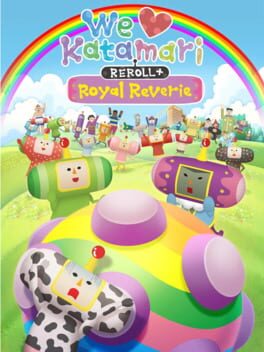
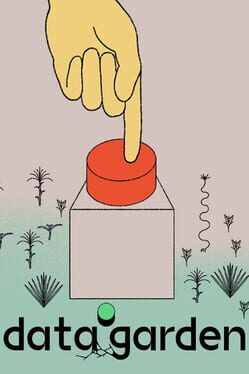
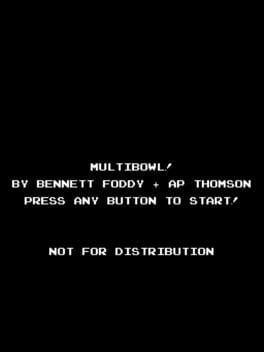



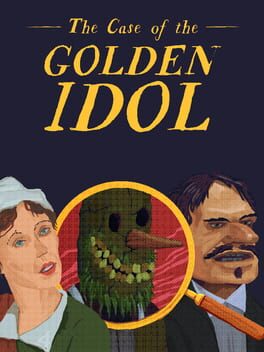
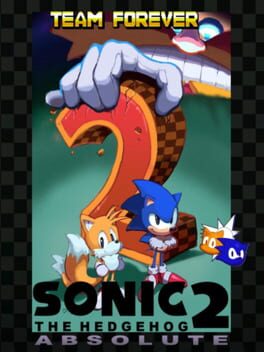

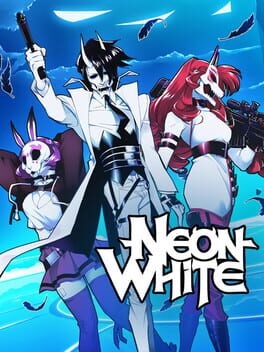

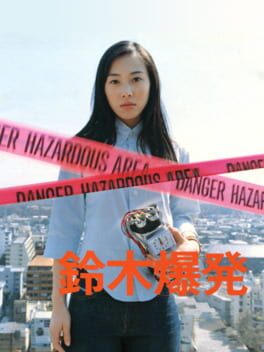
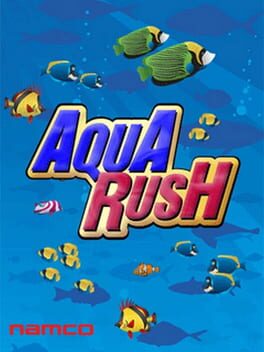

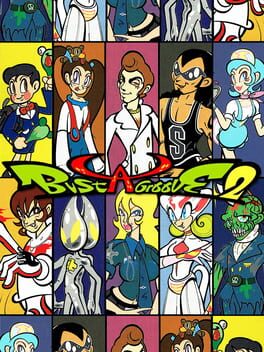

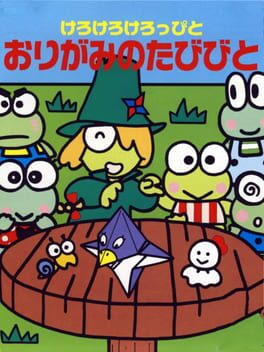
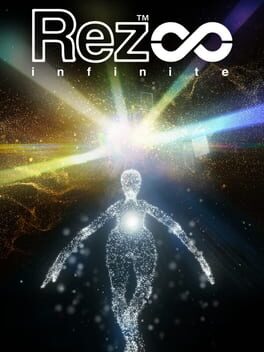
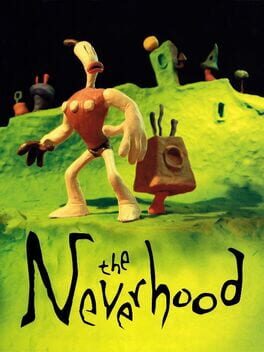

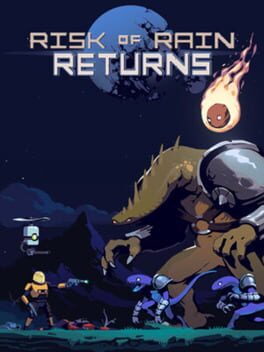
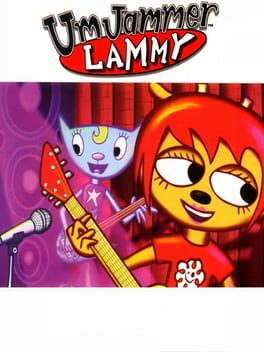
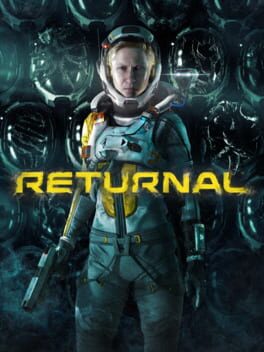
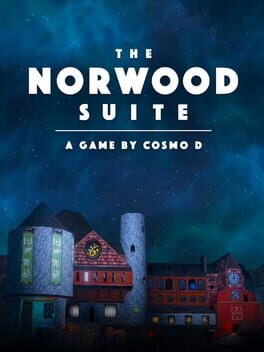
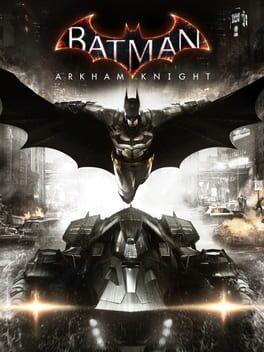
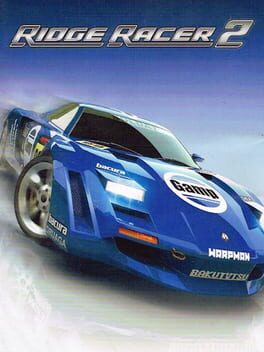
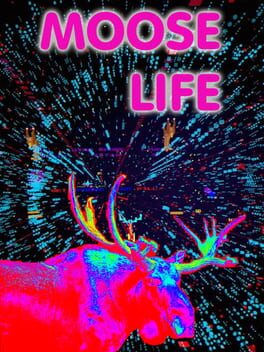
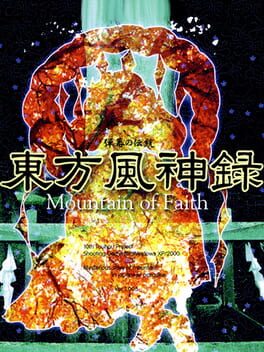
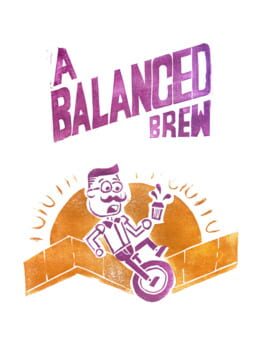
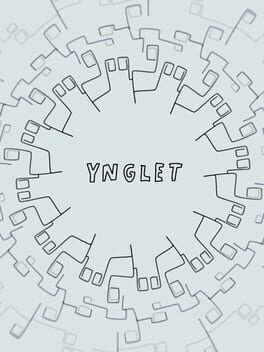

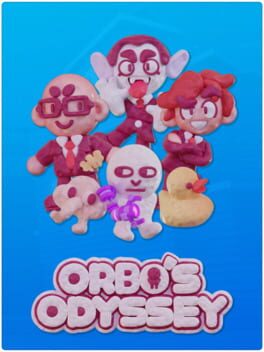
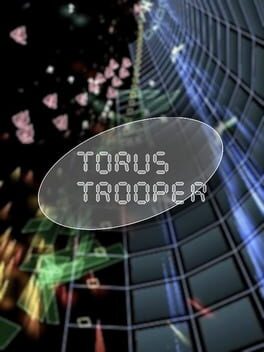
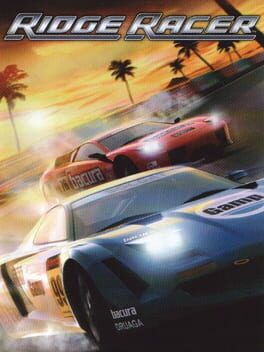
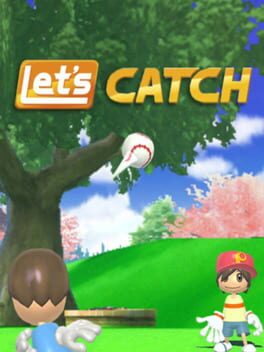
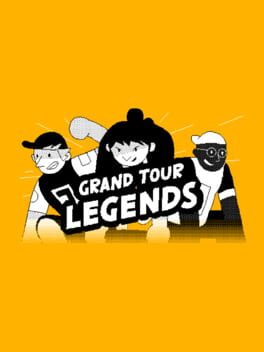
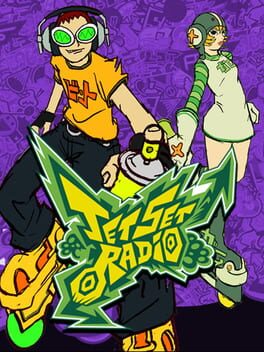
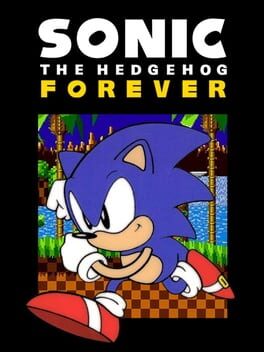
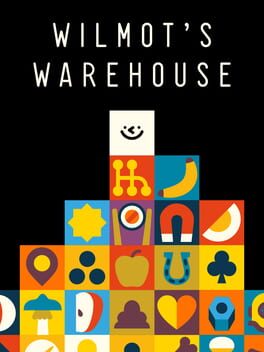
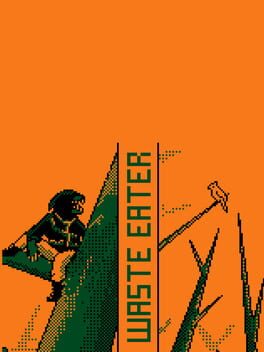
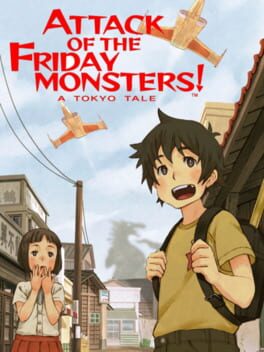

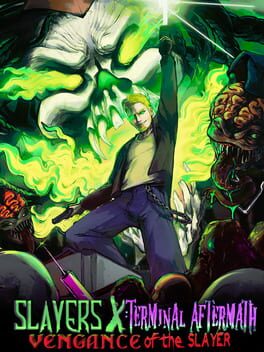
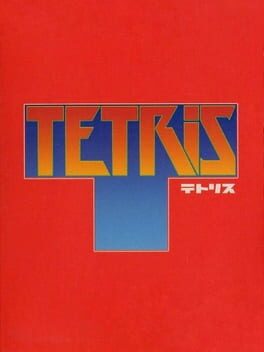
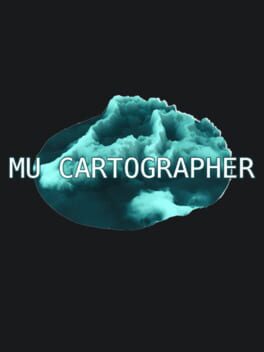
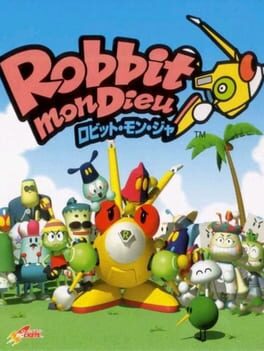
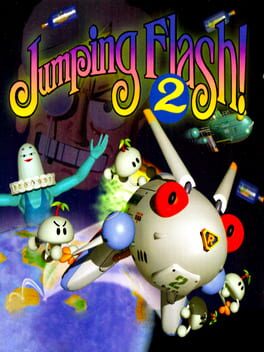

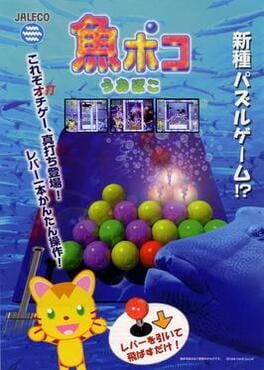
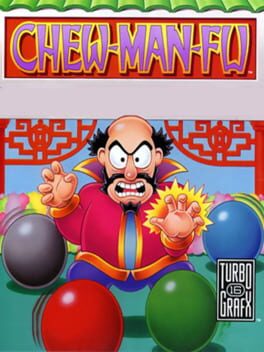
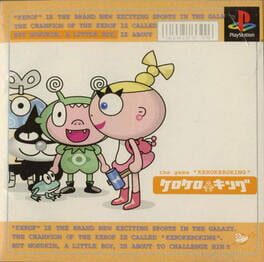

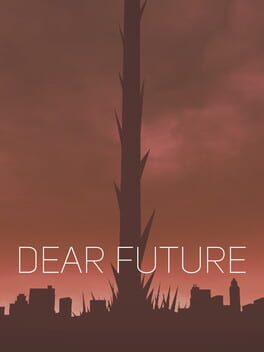
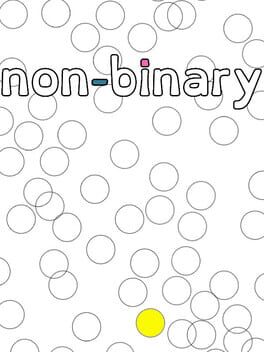

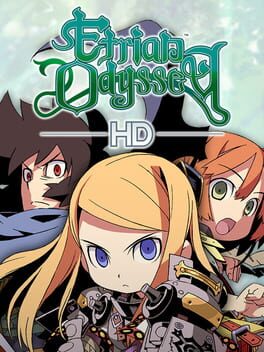
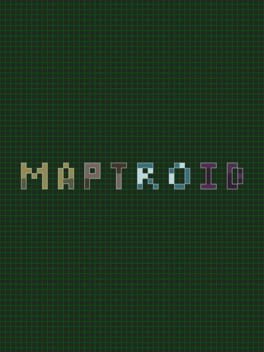
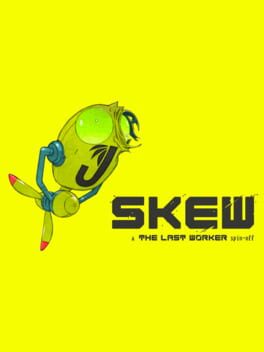

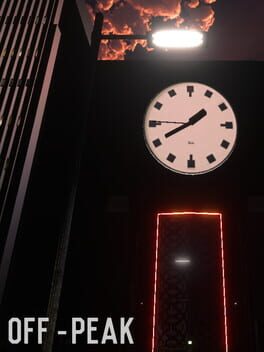
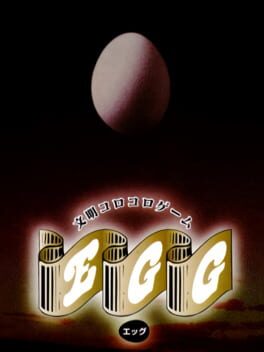
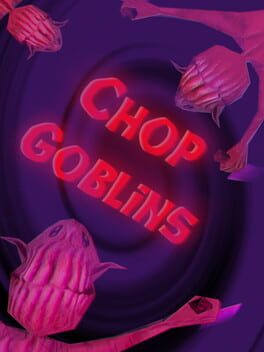
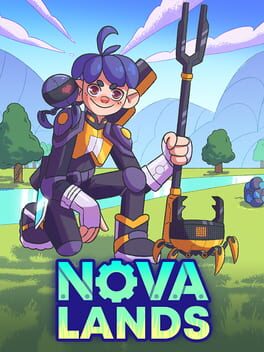
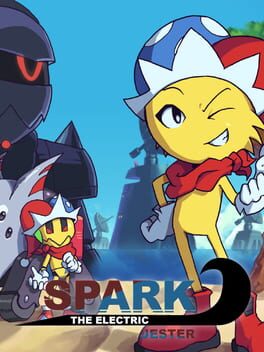
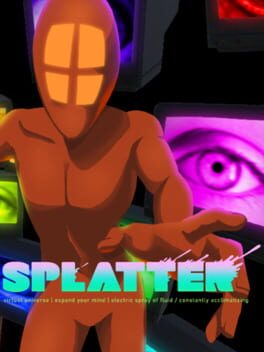
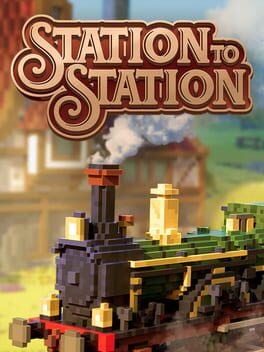
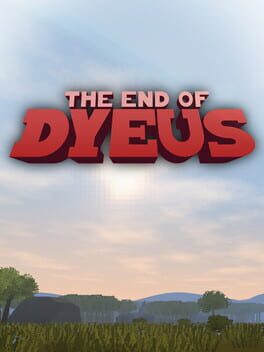
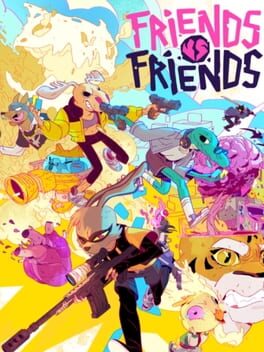



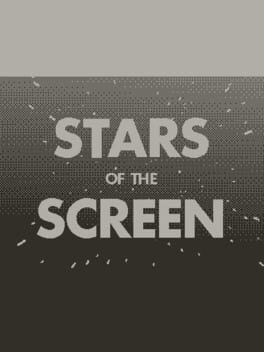


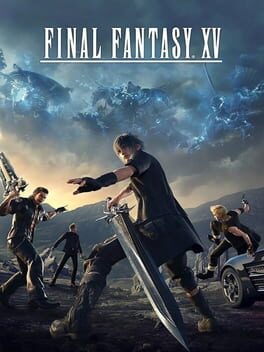
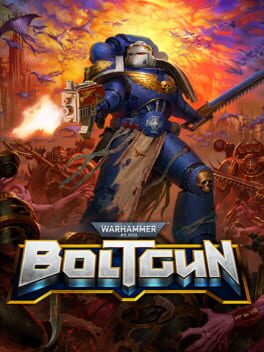
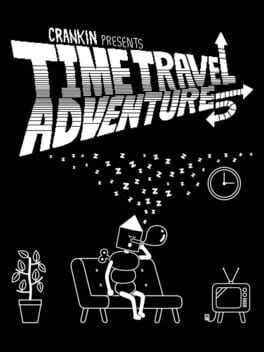
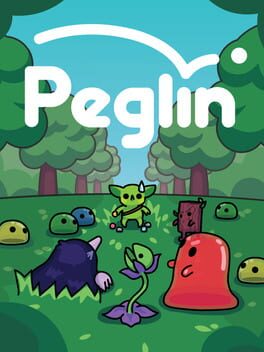
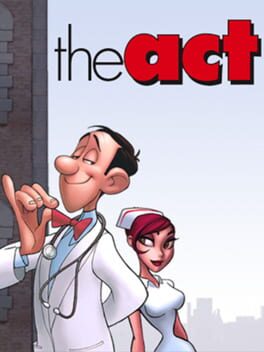
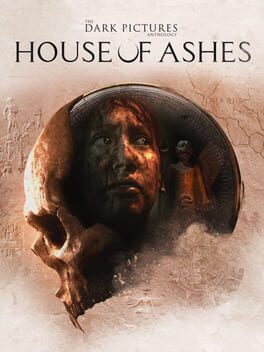
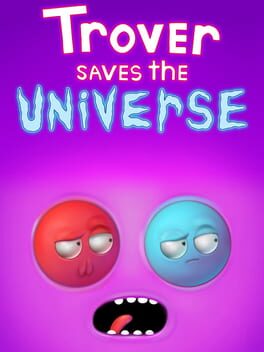
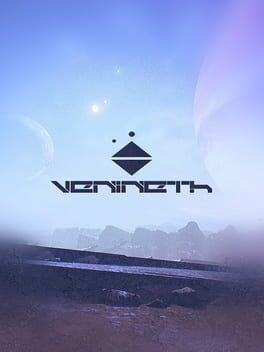
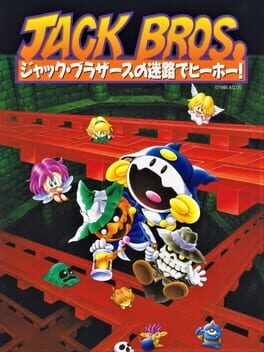
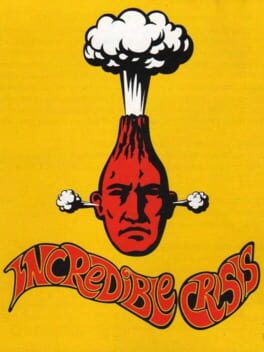

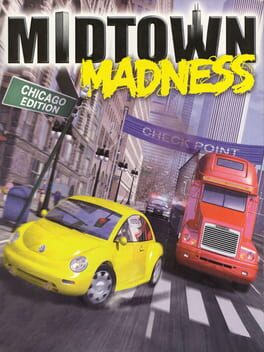

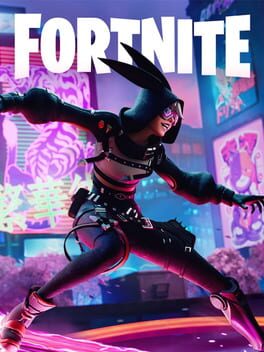

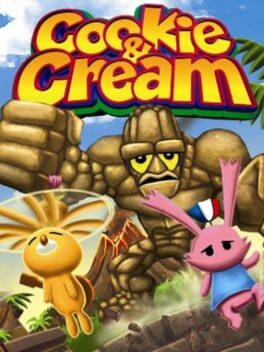
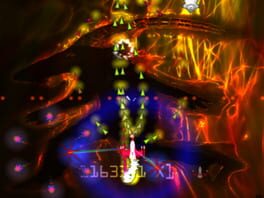
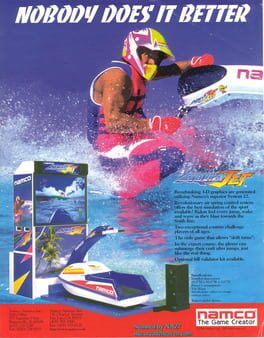
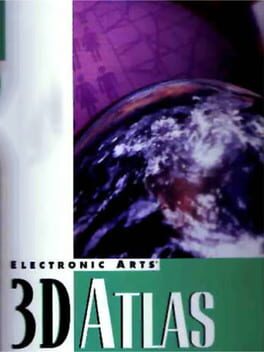
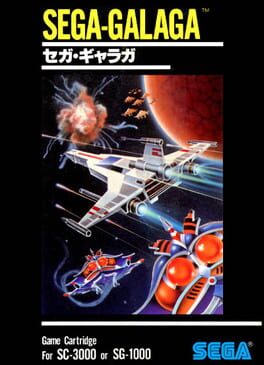
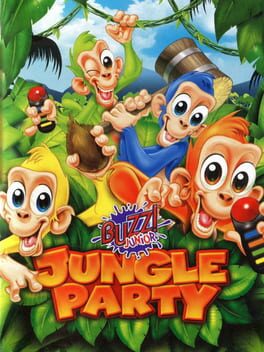
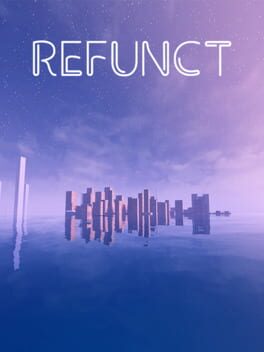

DeemonAndGames
4 months ago
For real tho I'm so glad you made this, I didn't even know you made a follow up to your 177 review so early in the year until I just saw it here, same things goes for a ton of reviews I hadn't checked out till now. Amazing year full of amazing reviews, that's something that I could say about a ton of the talented people on here (which is a lot) but your works are always a fantastic read and an inspiration for me and I'm sure also for many others. Excellent work!